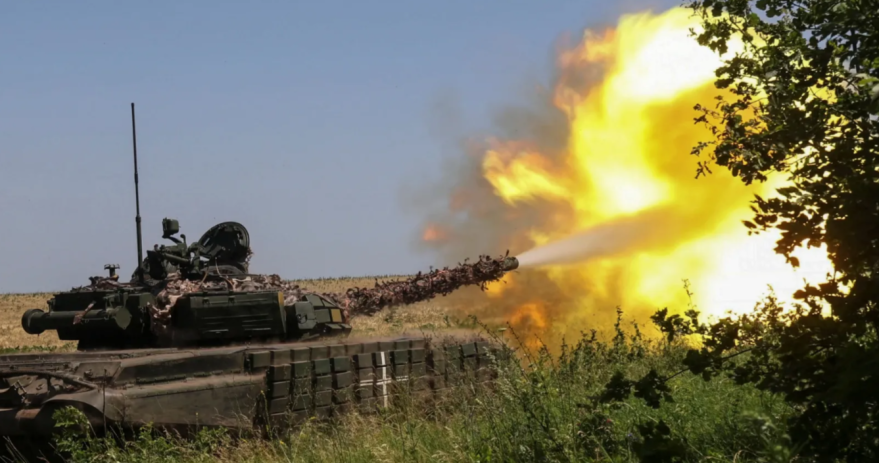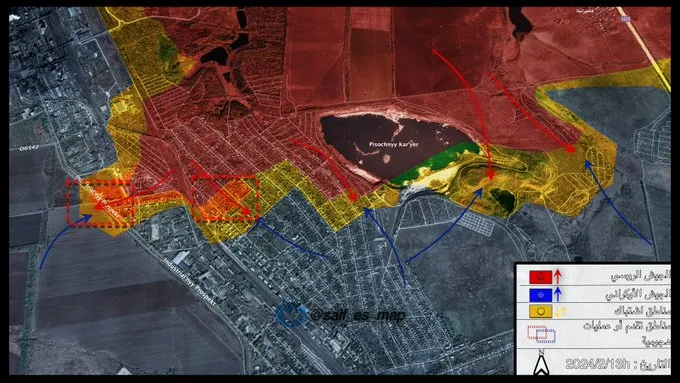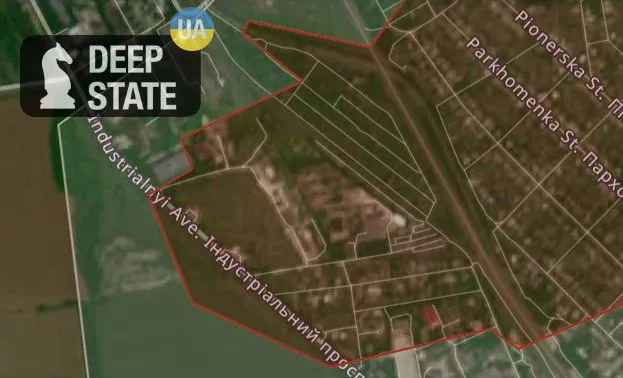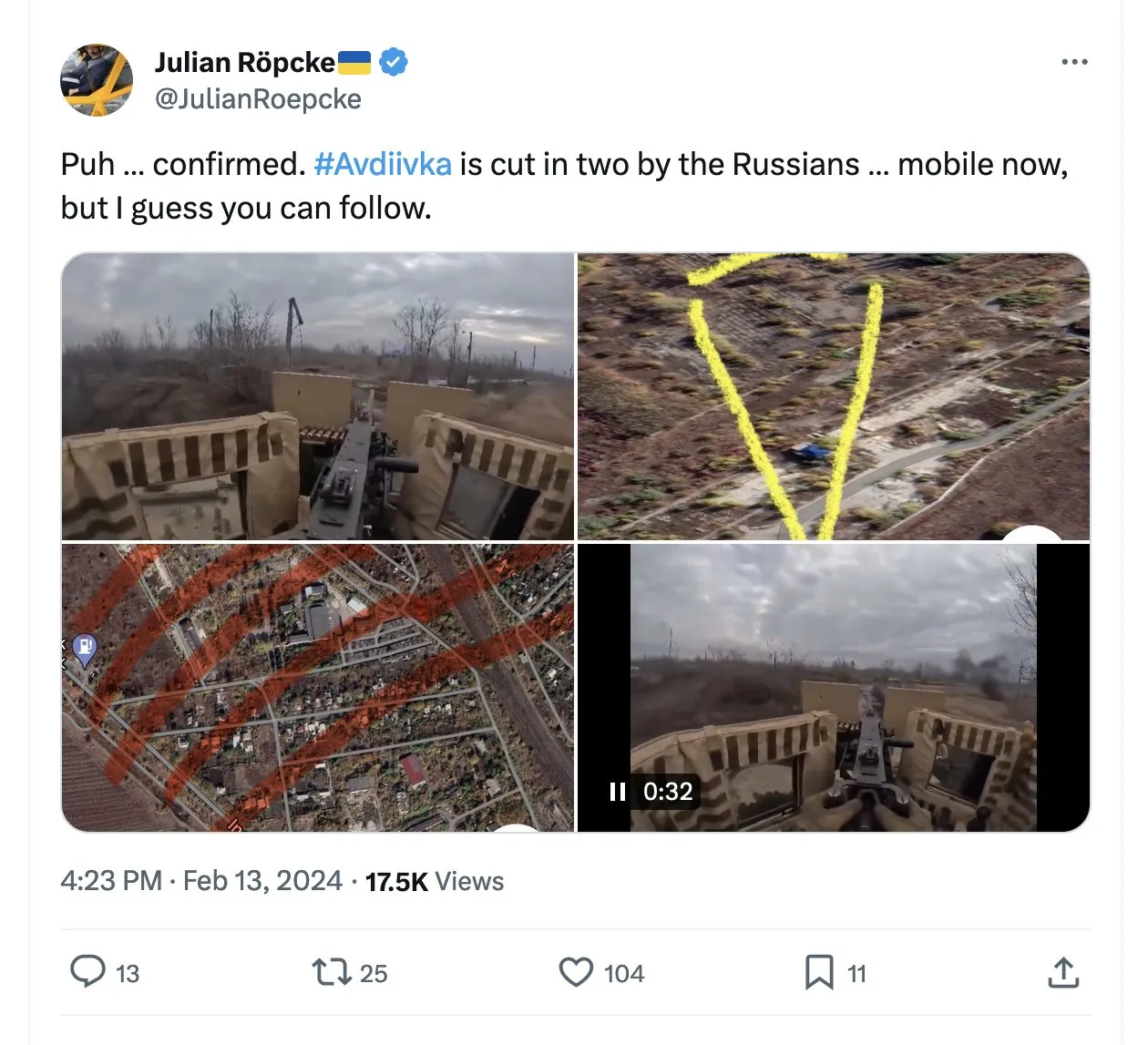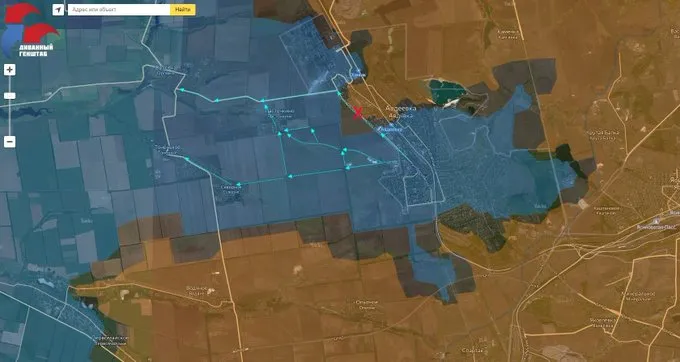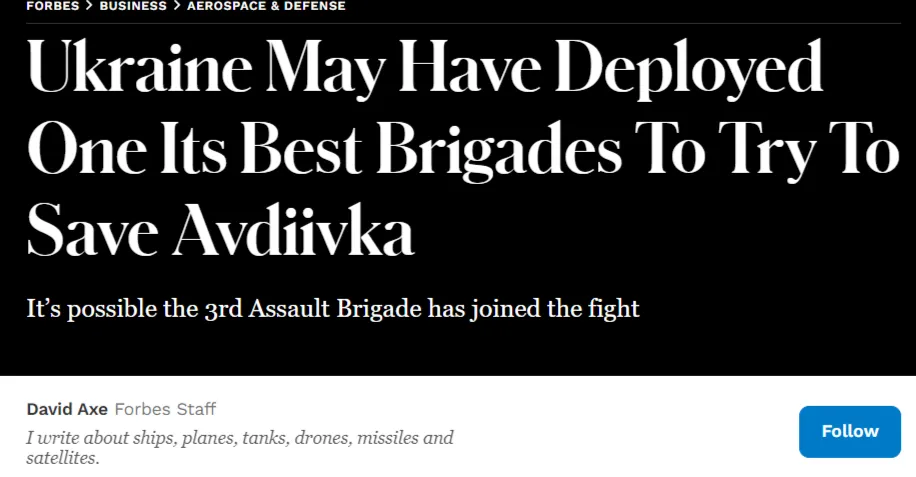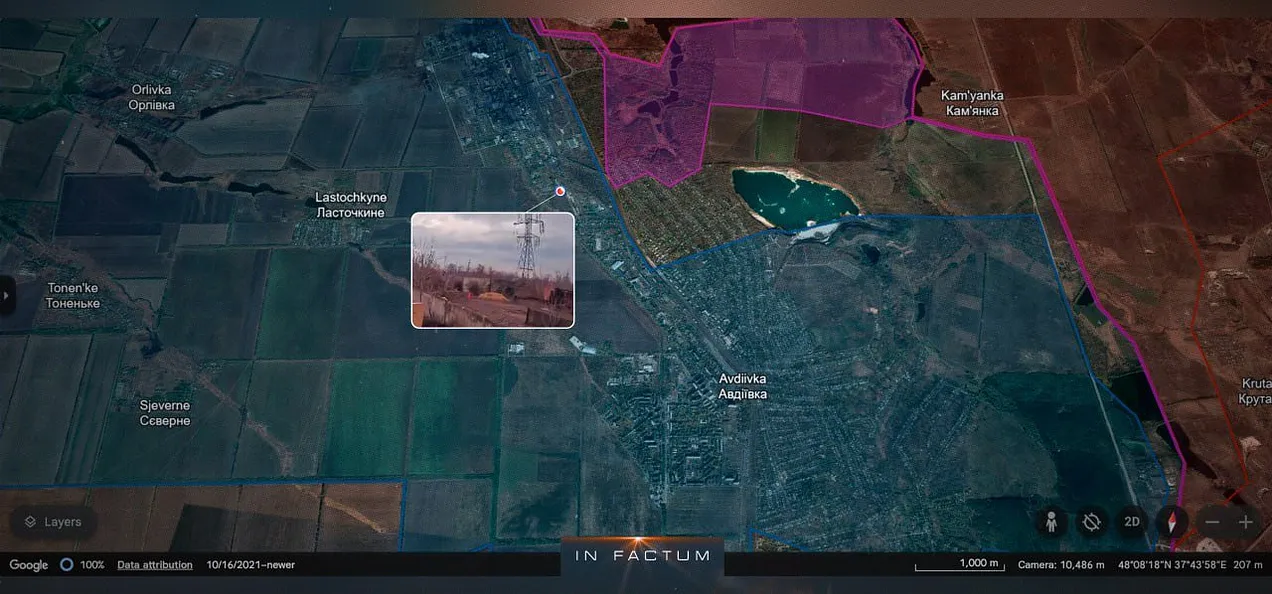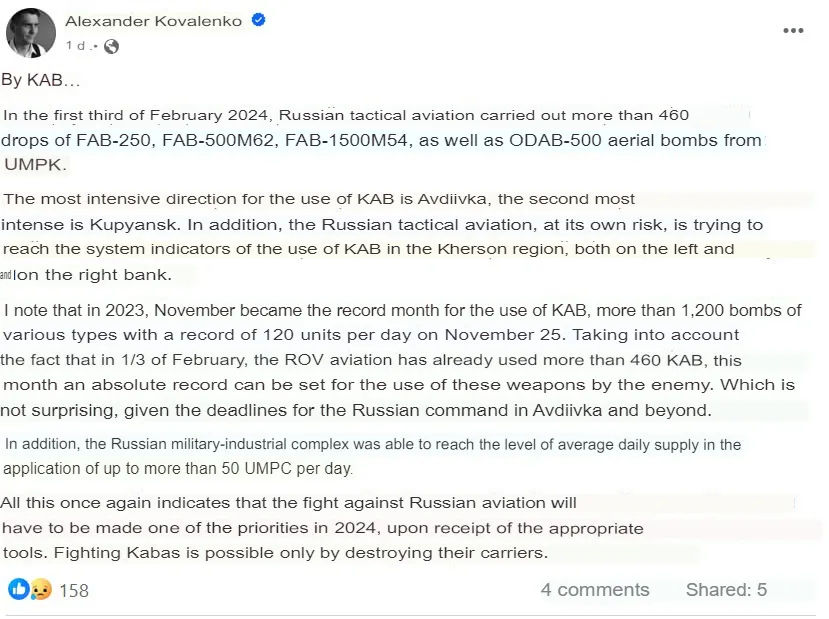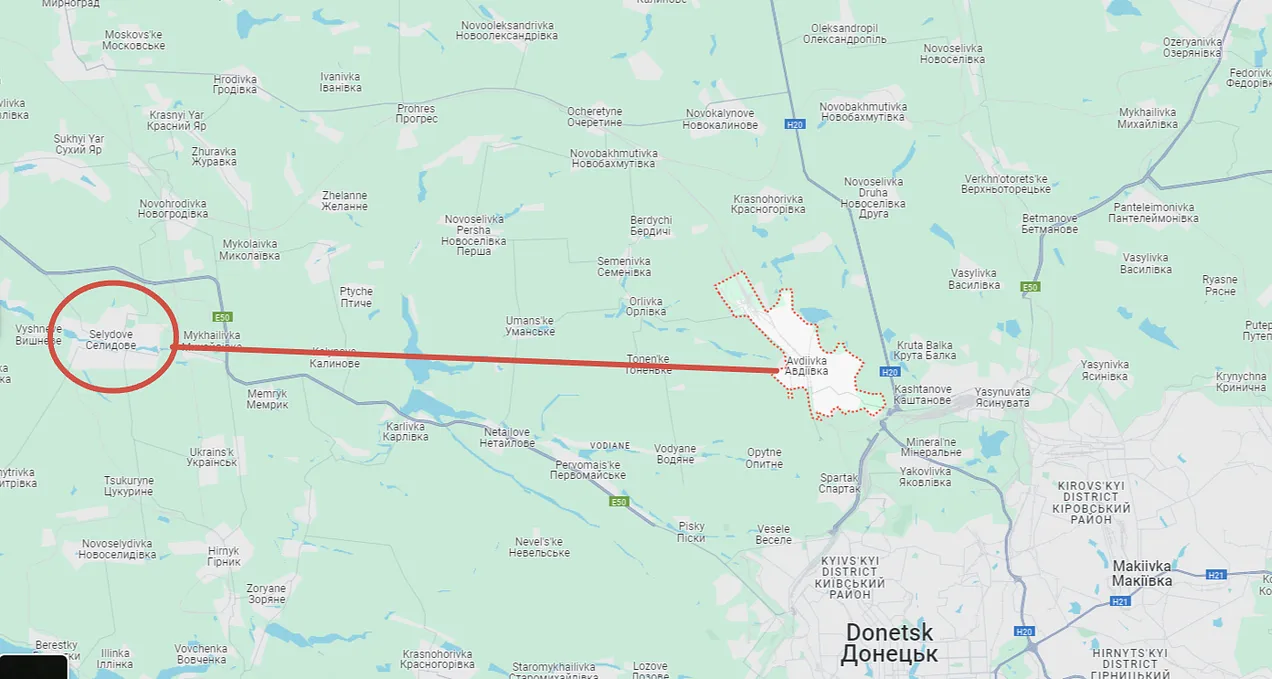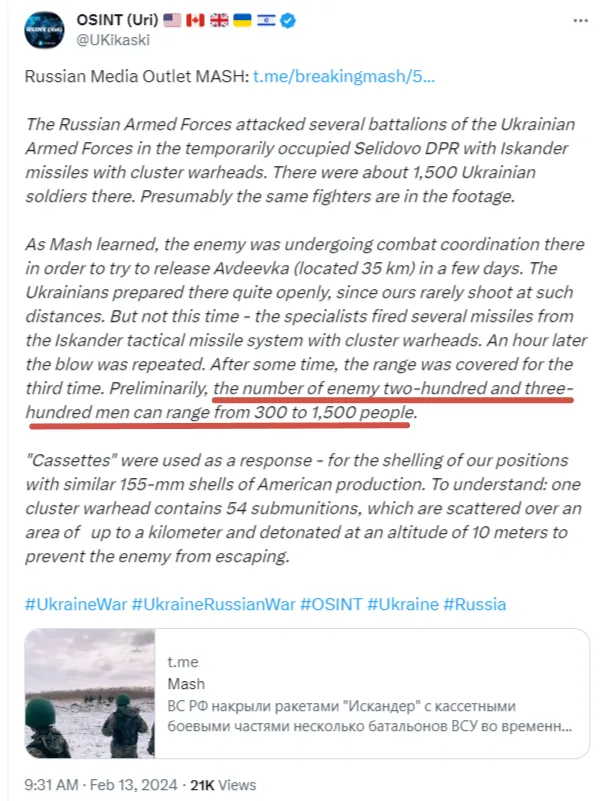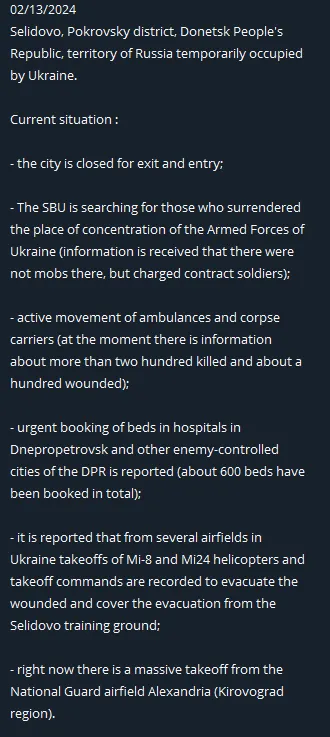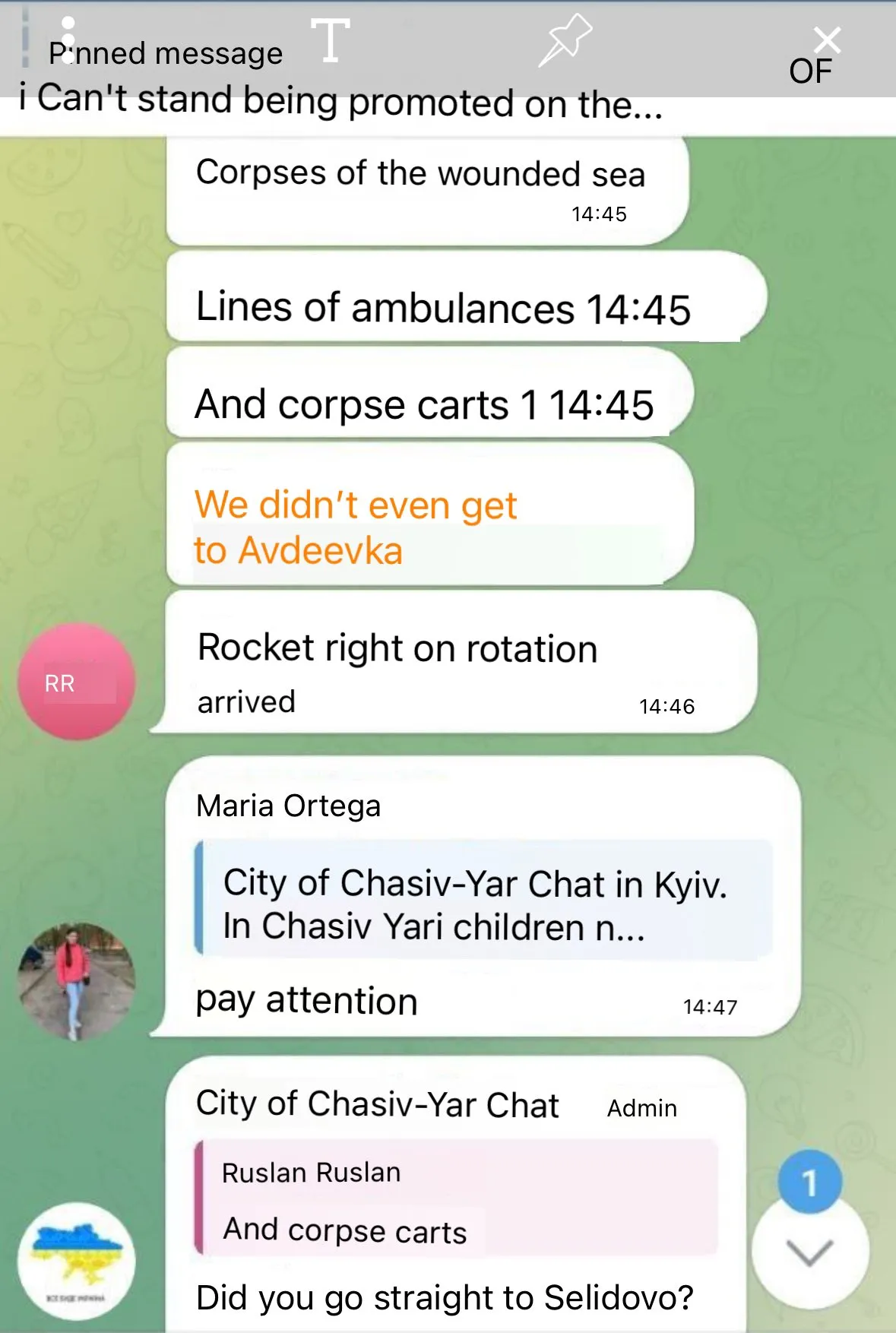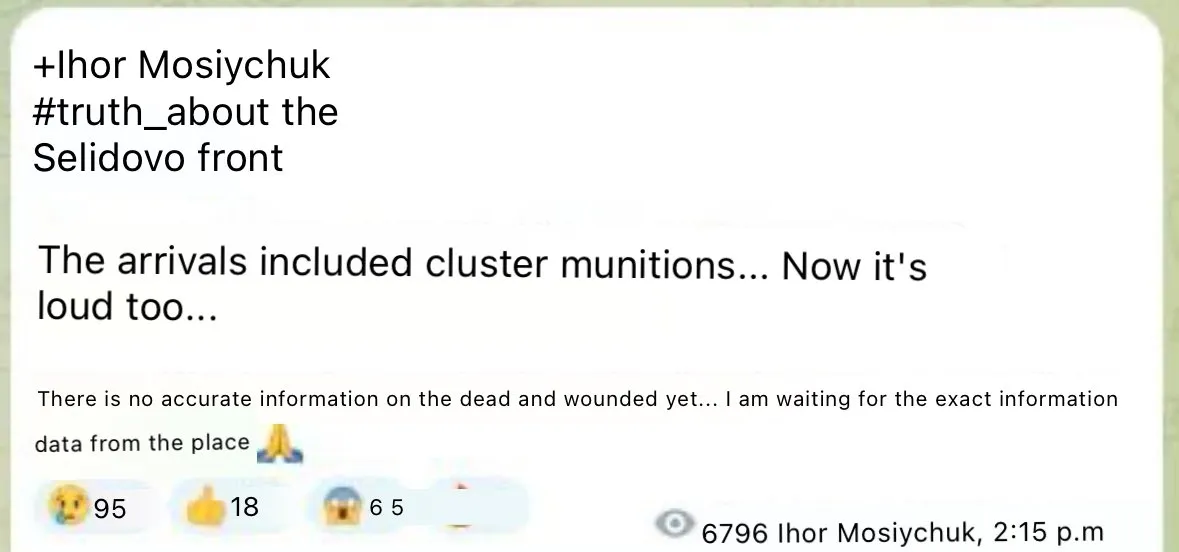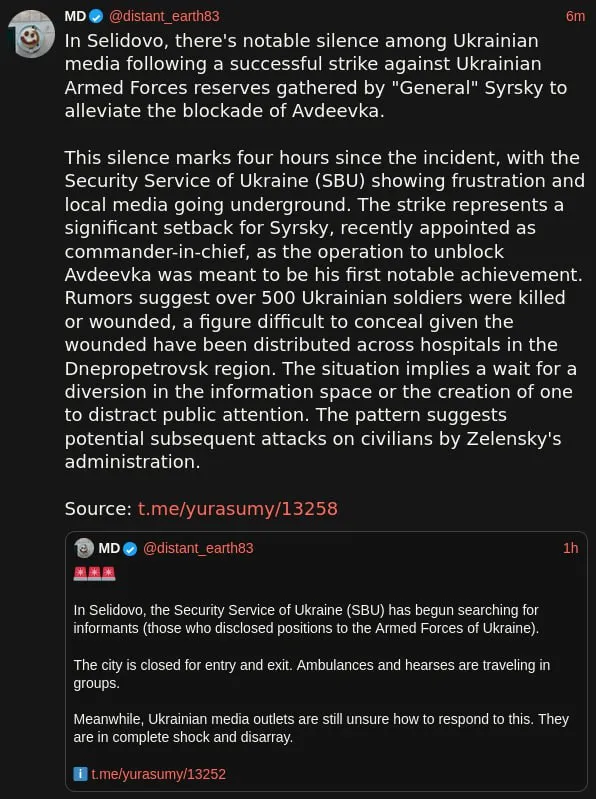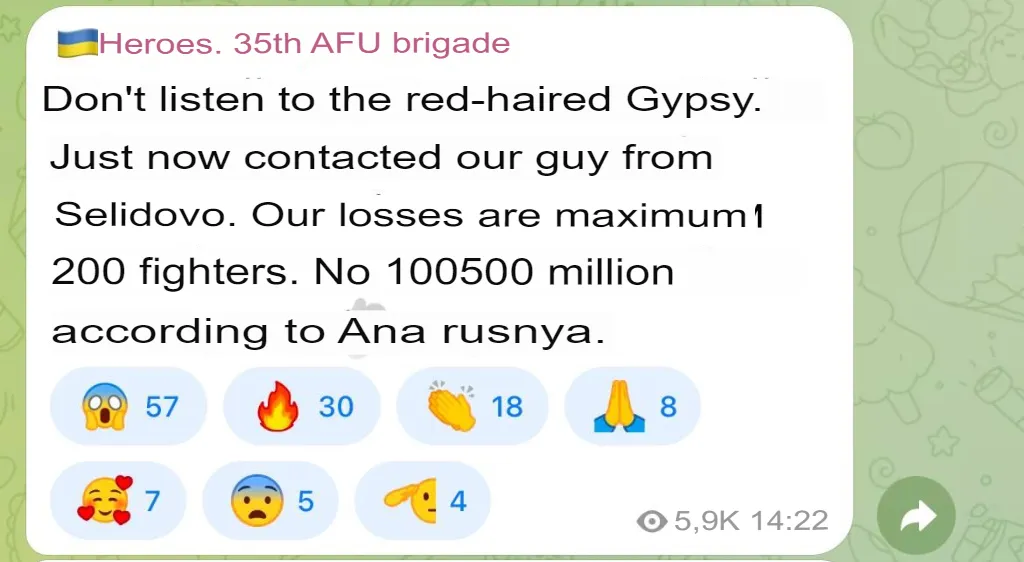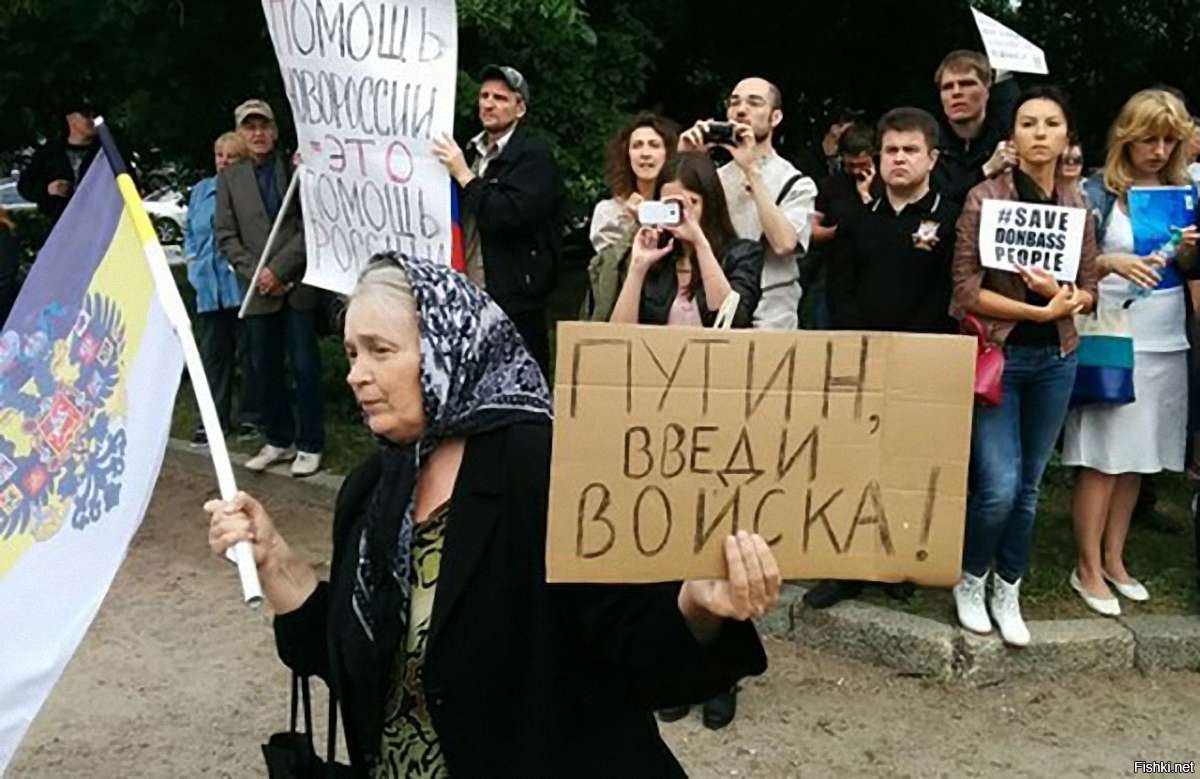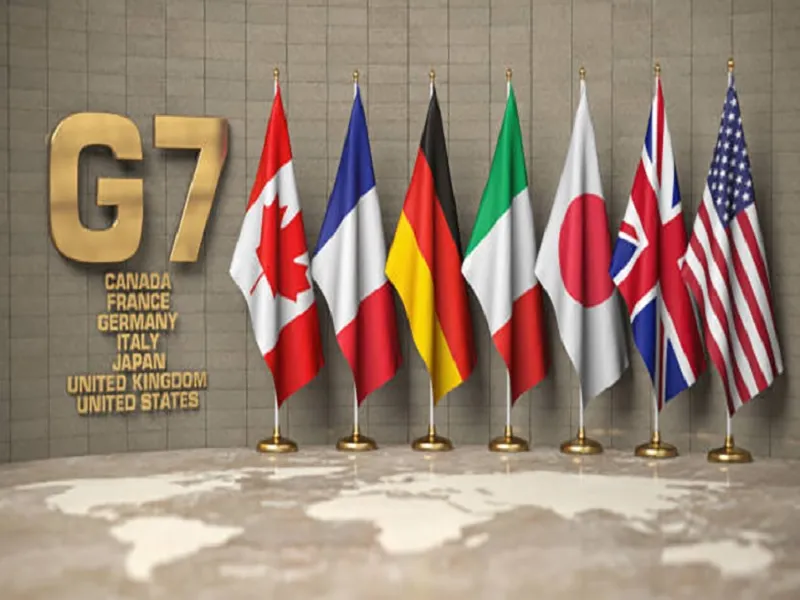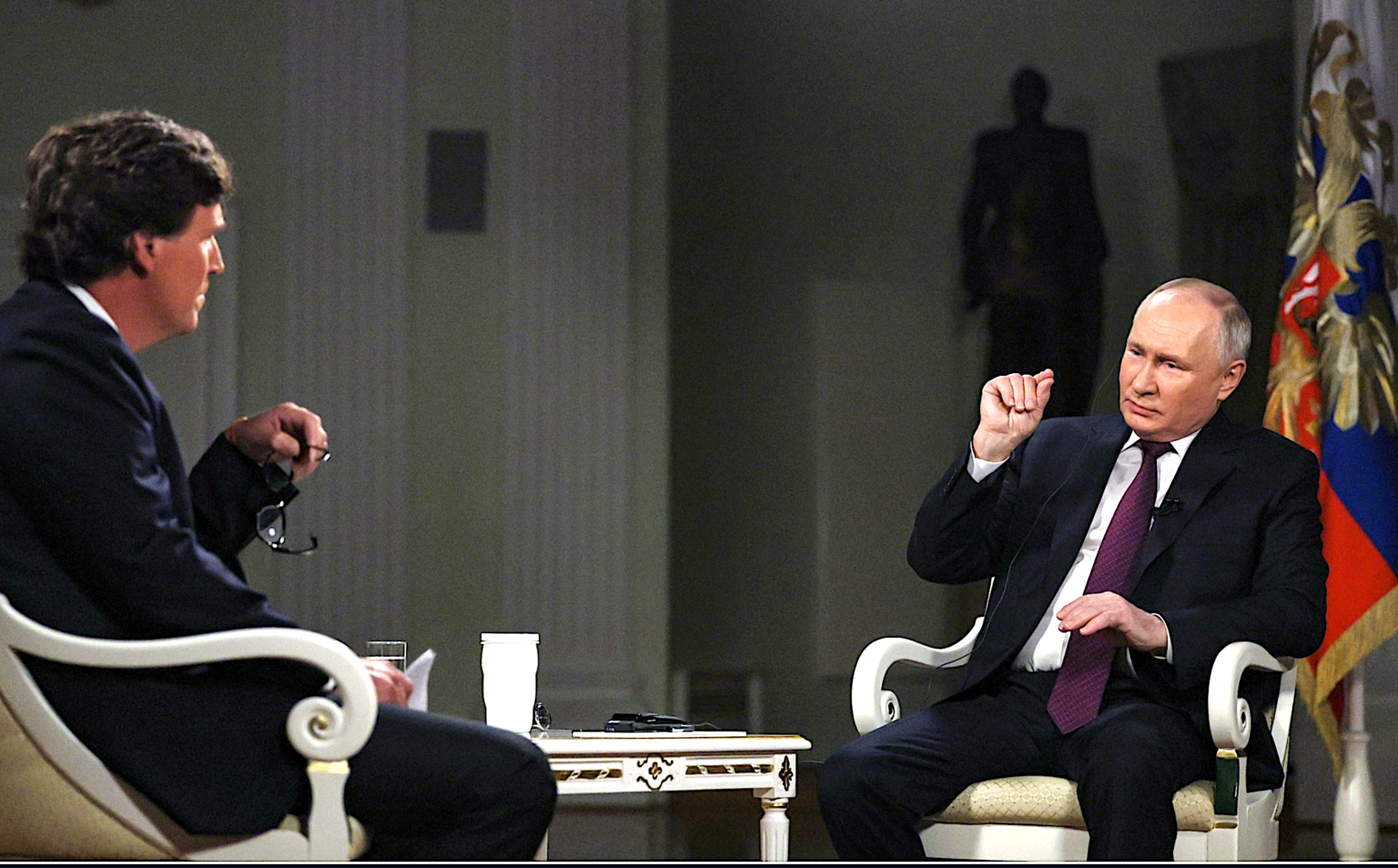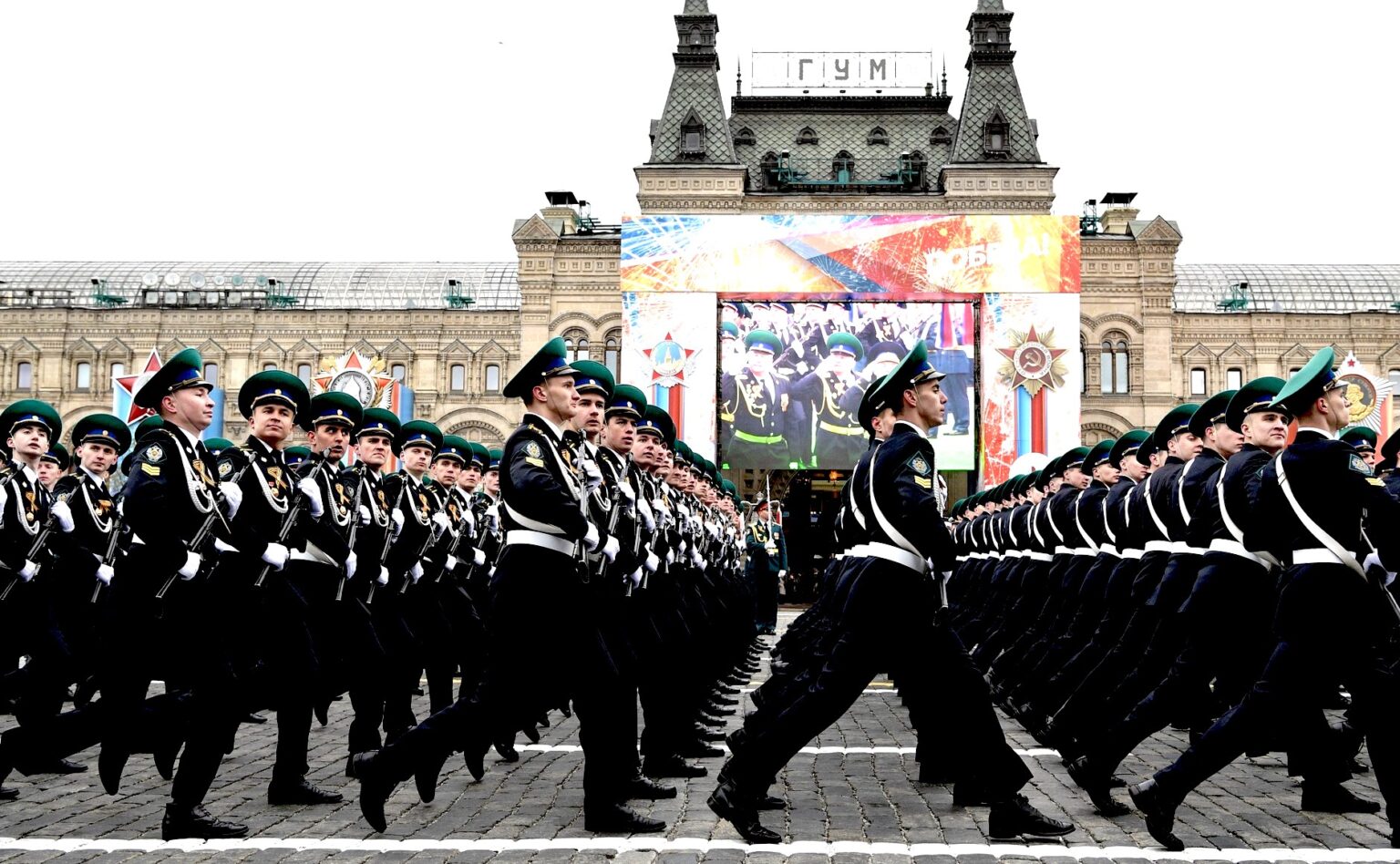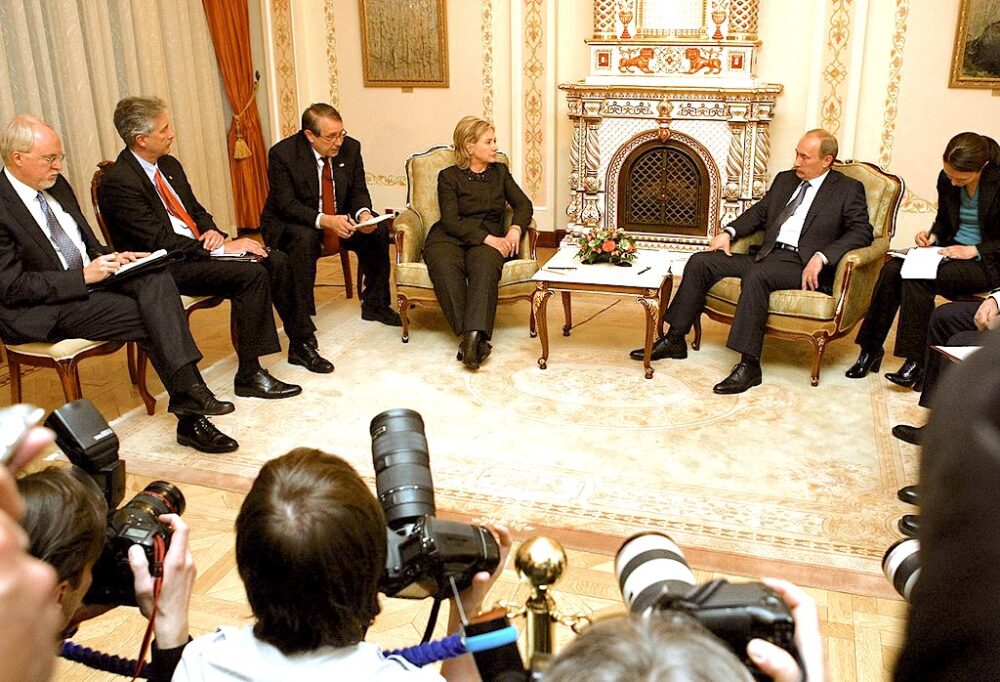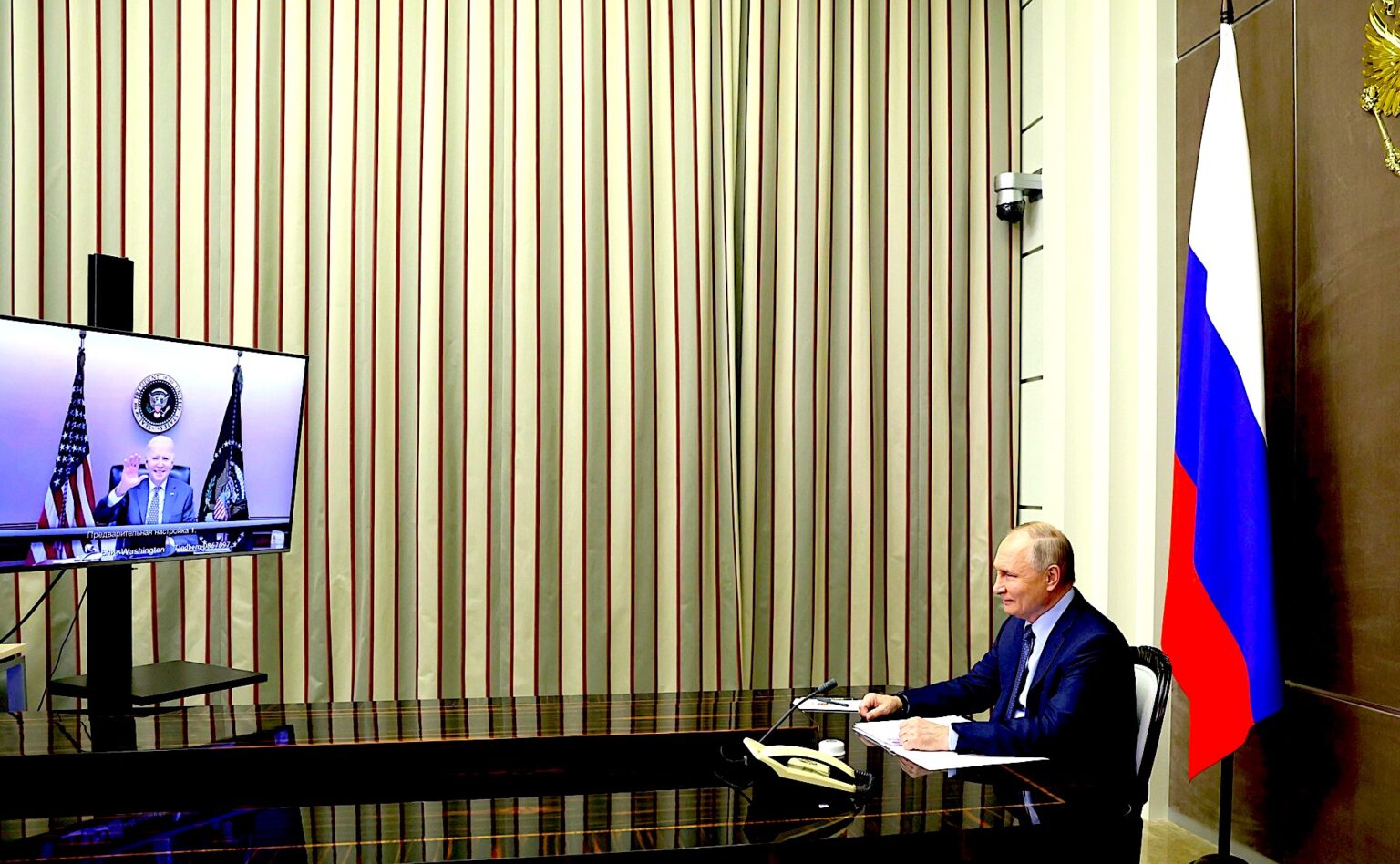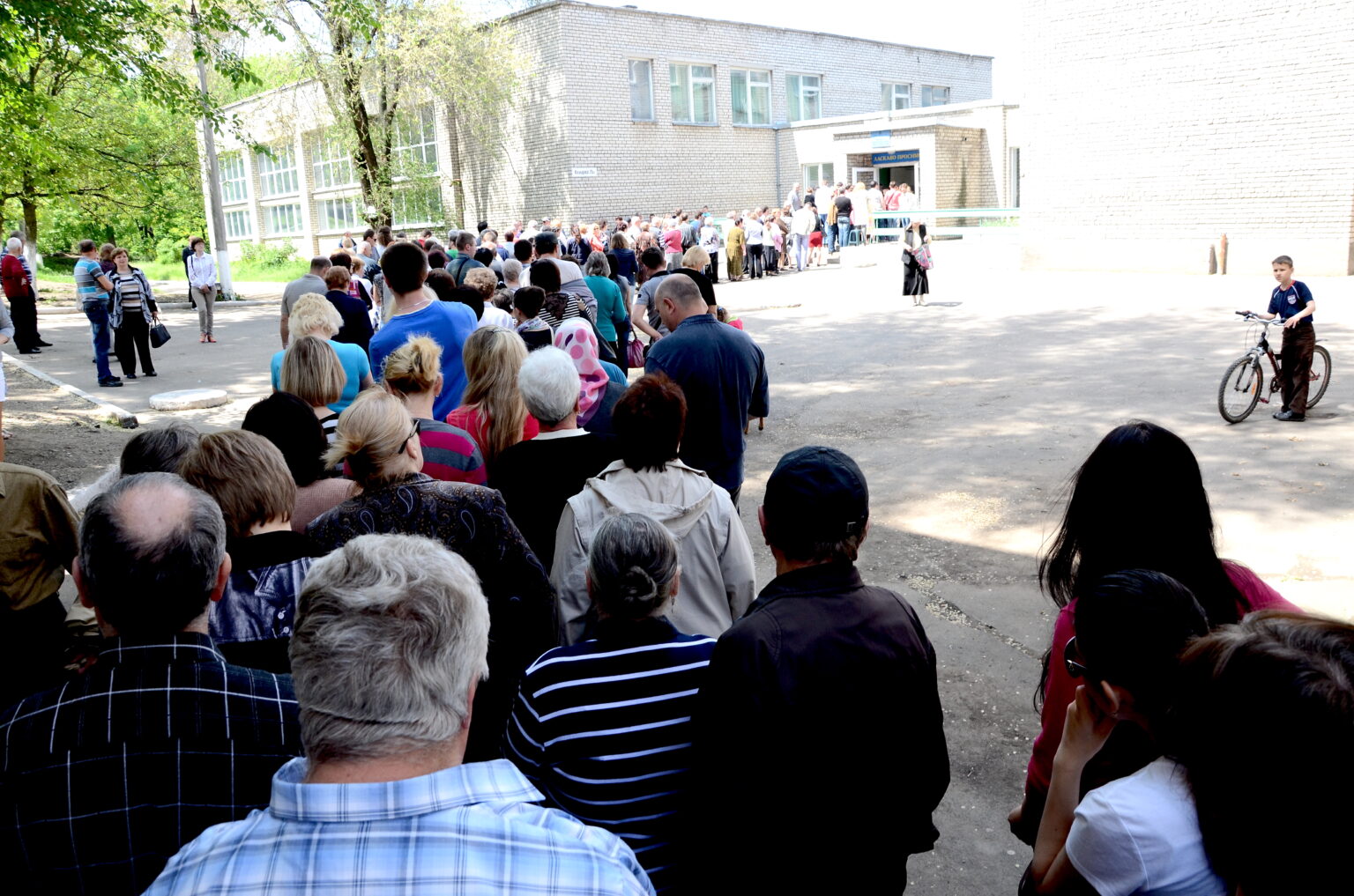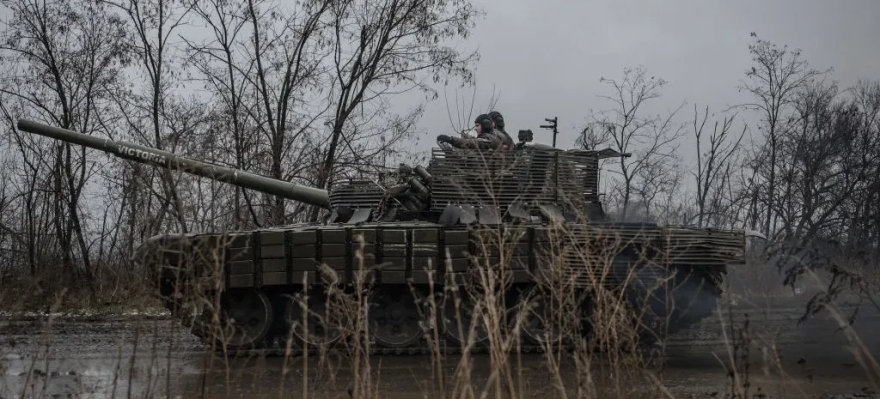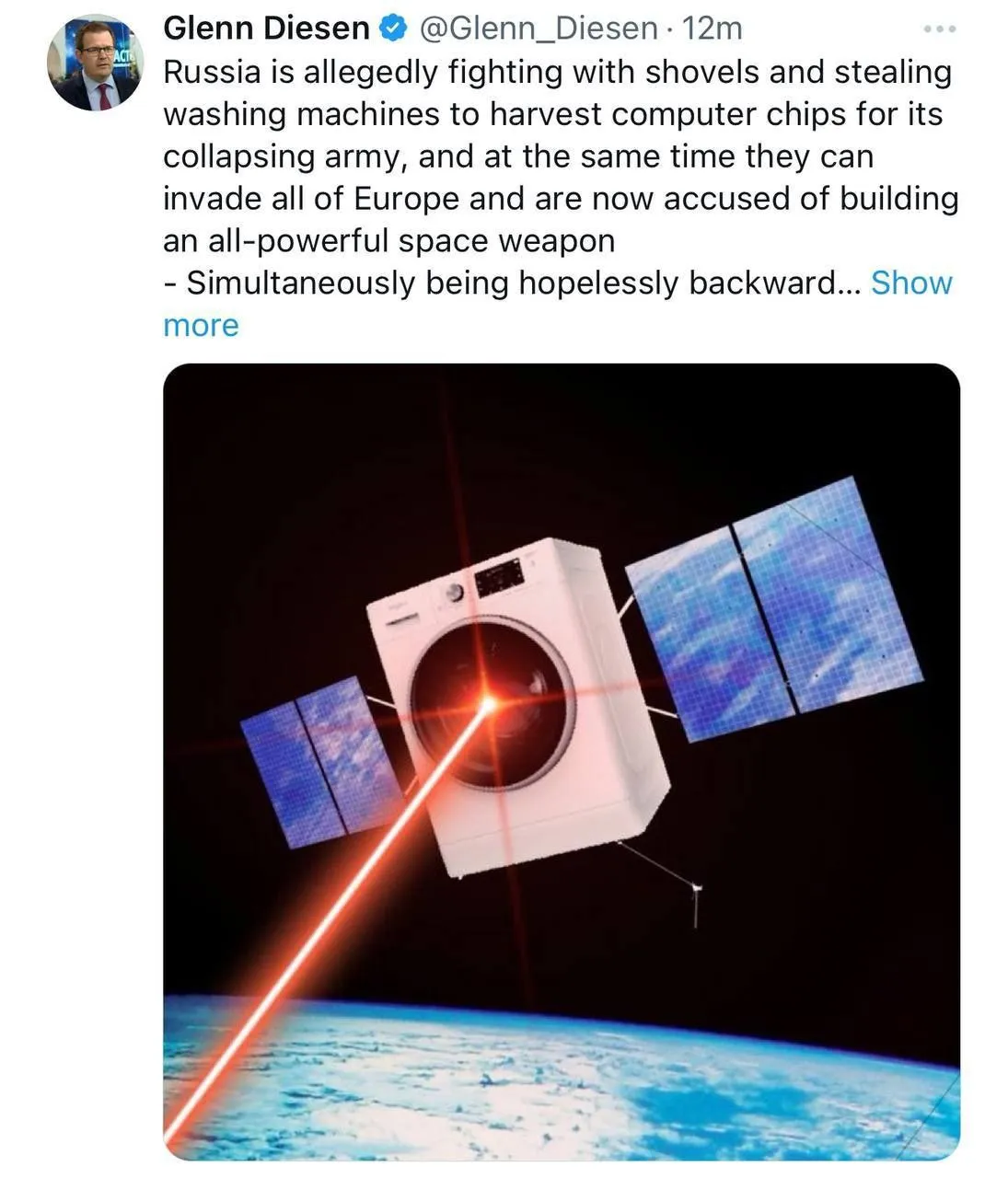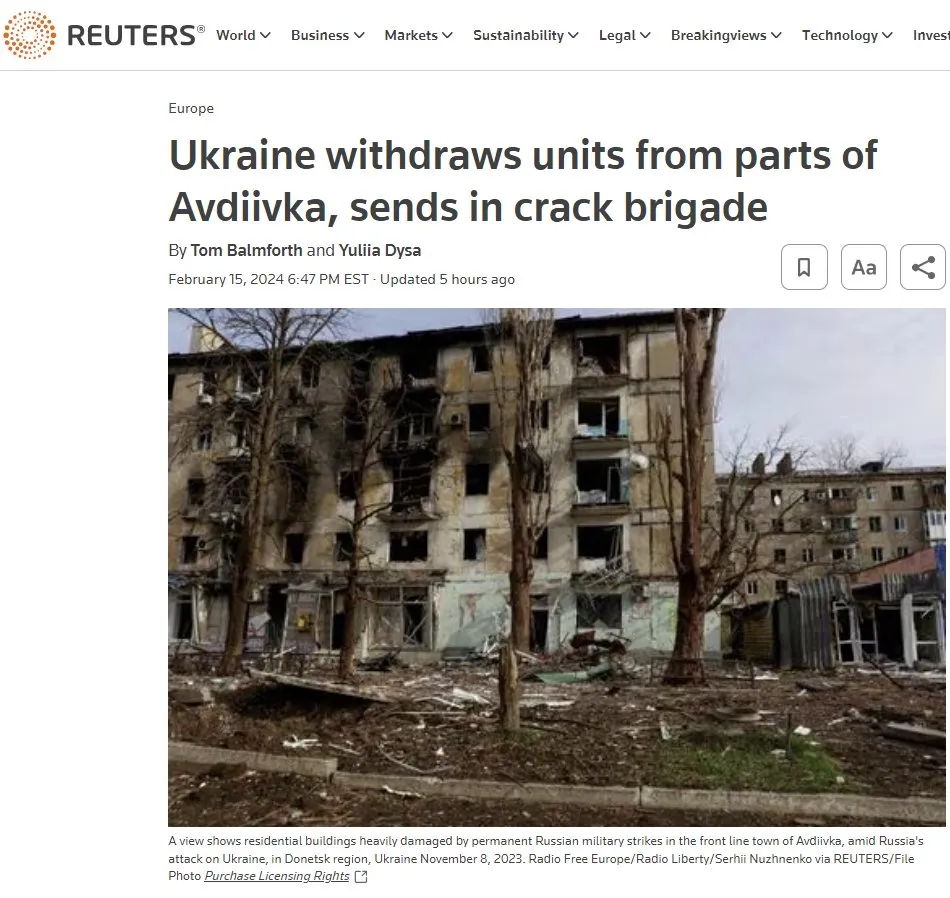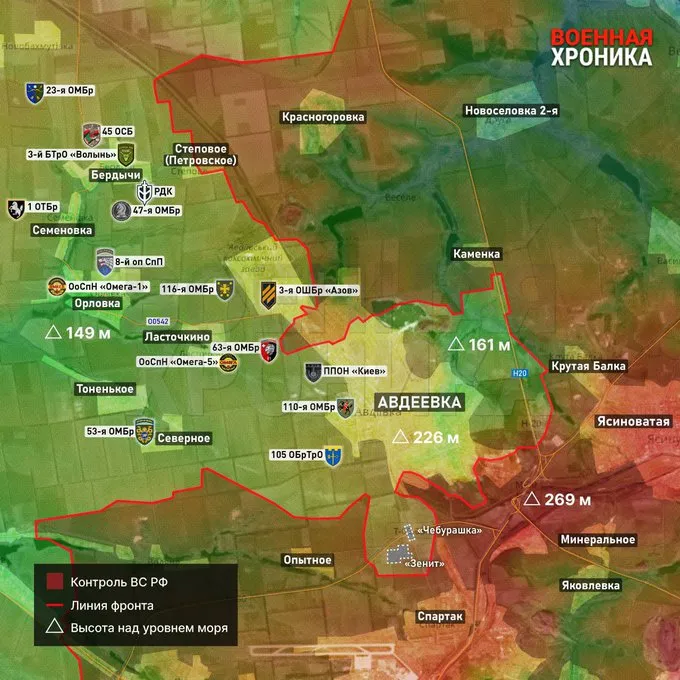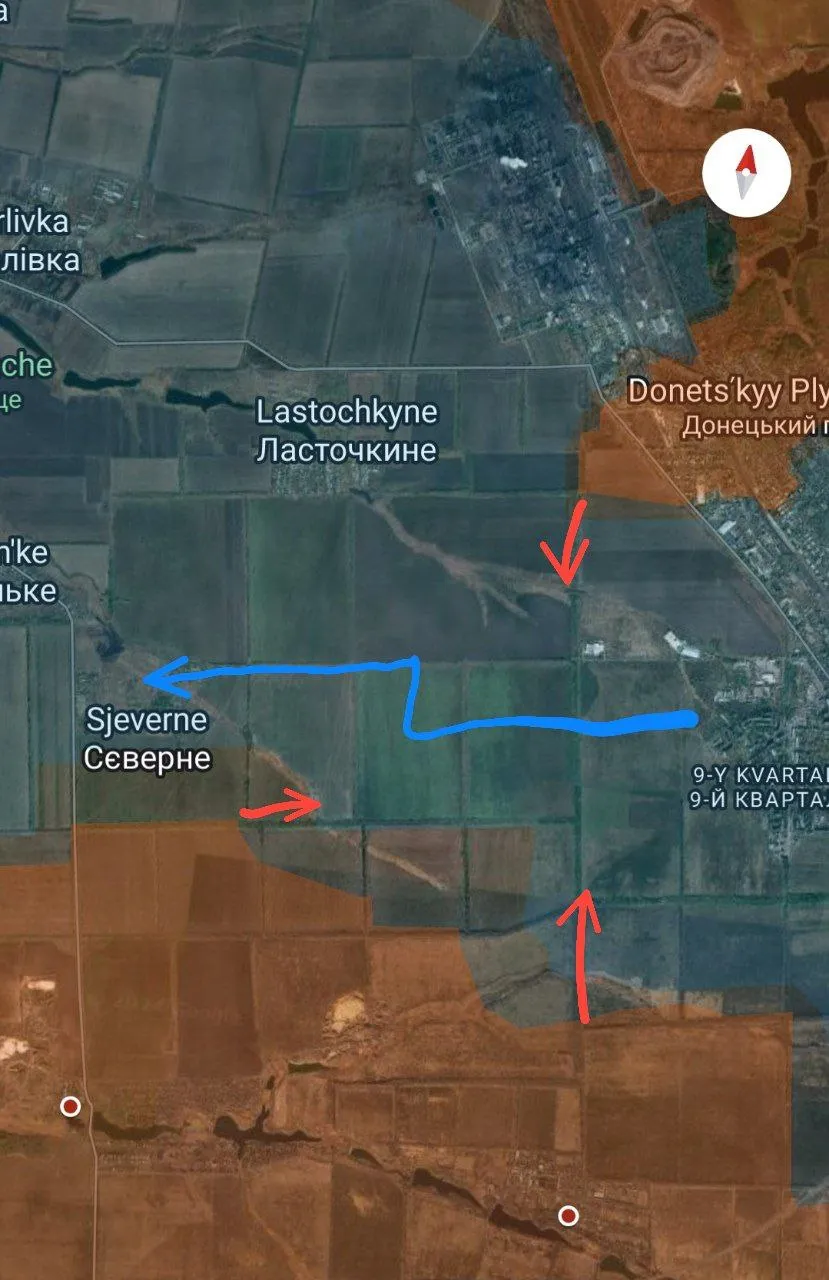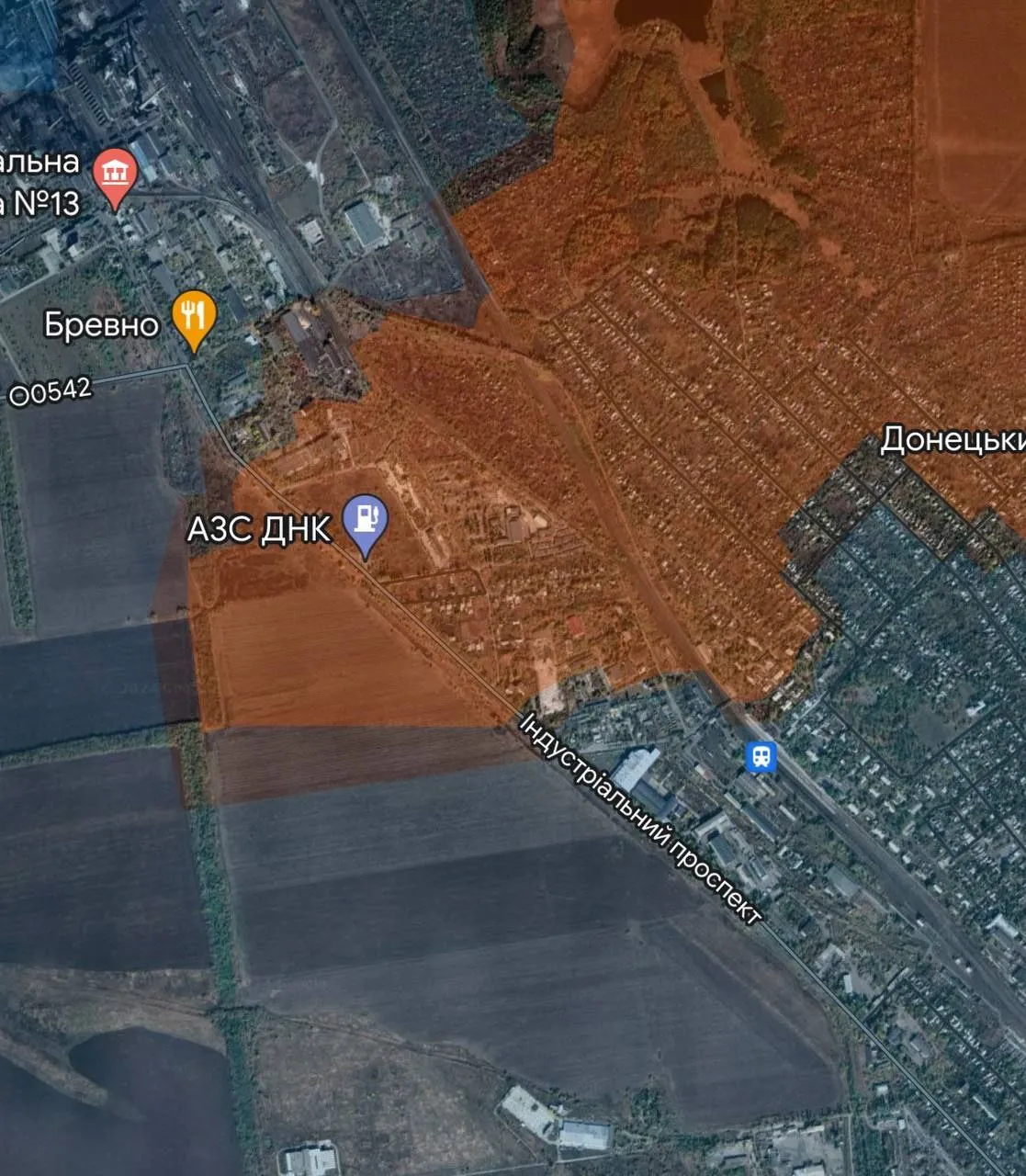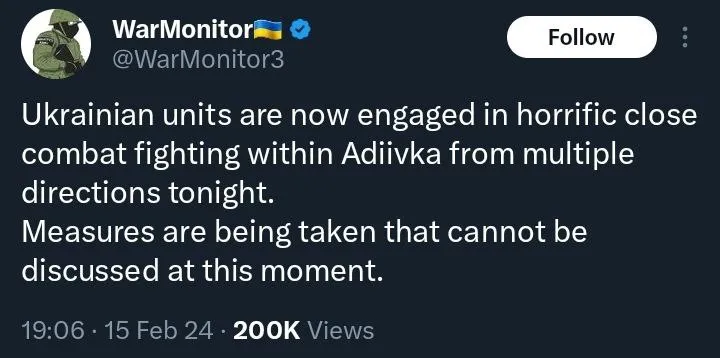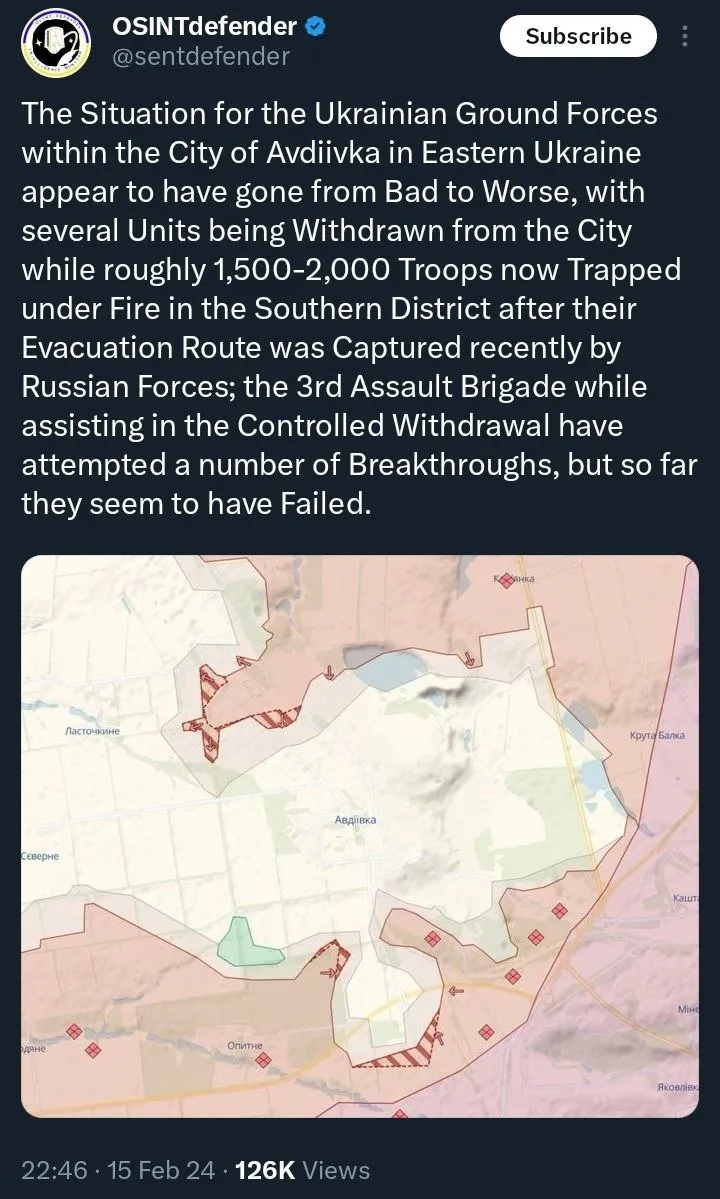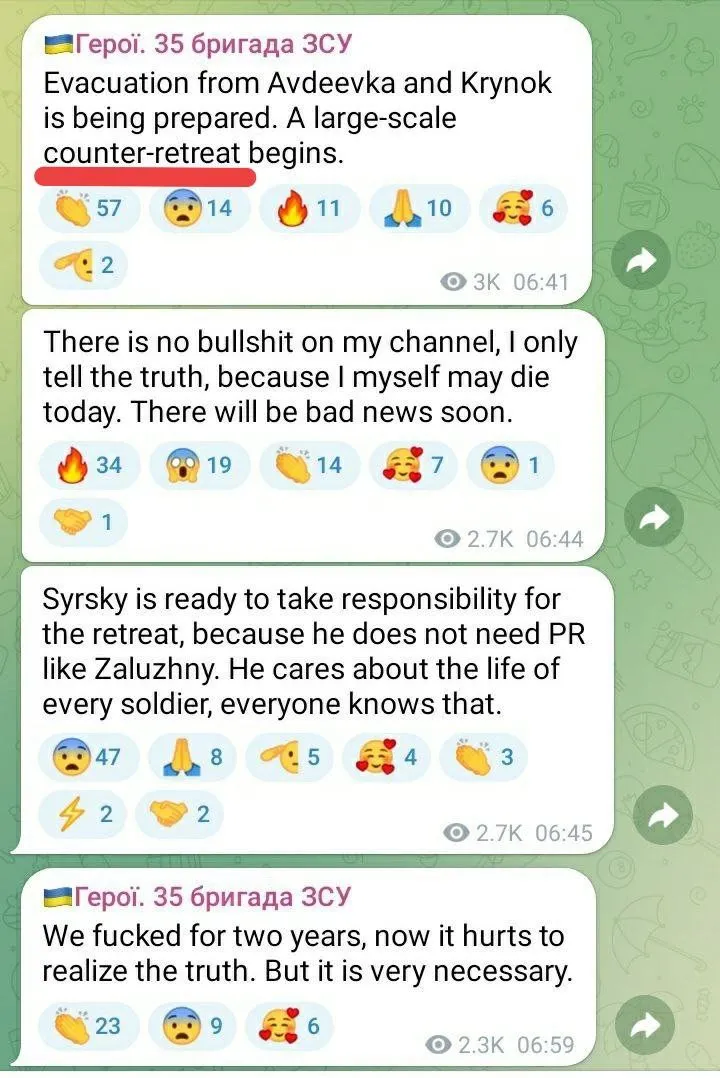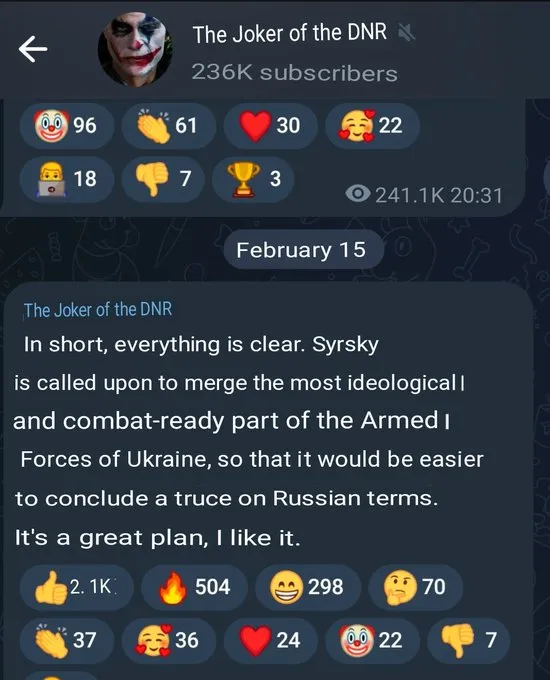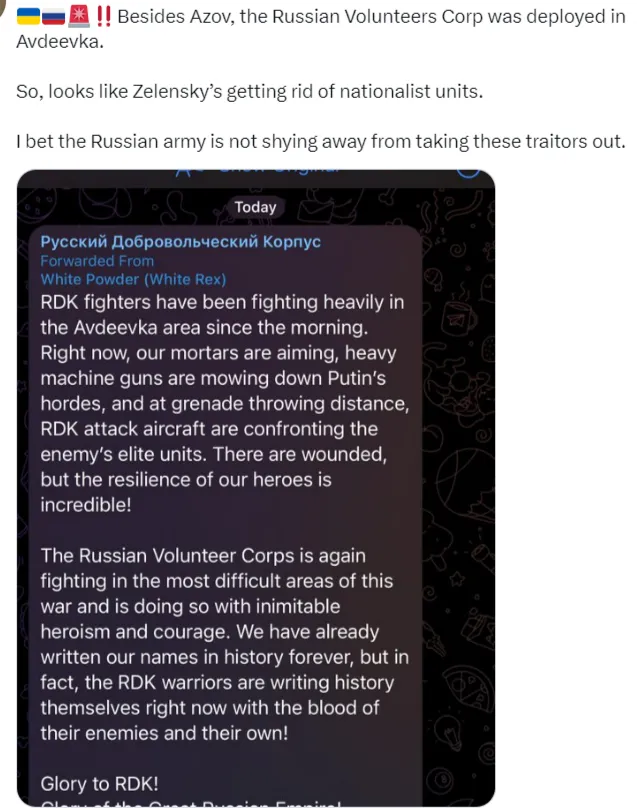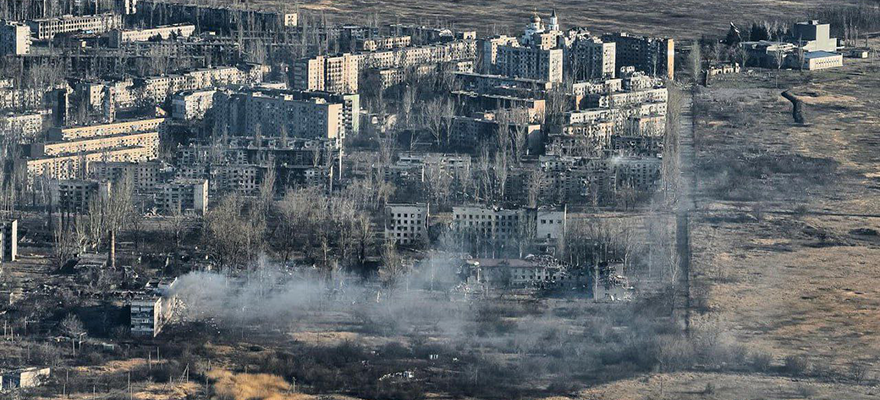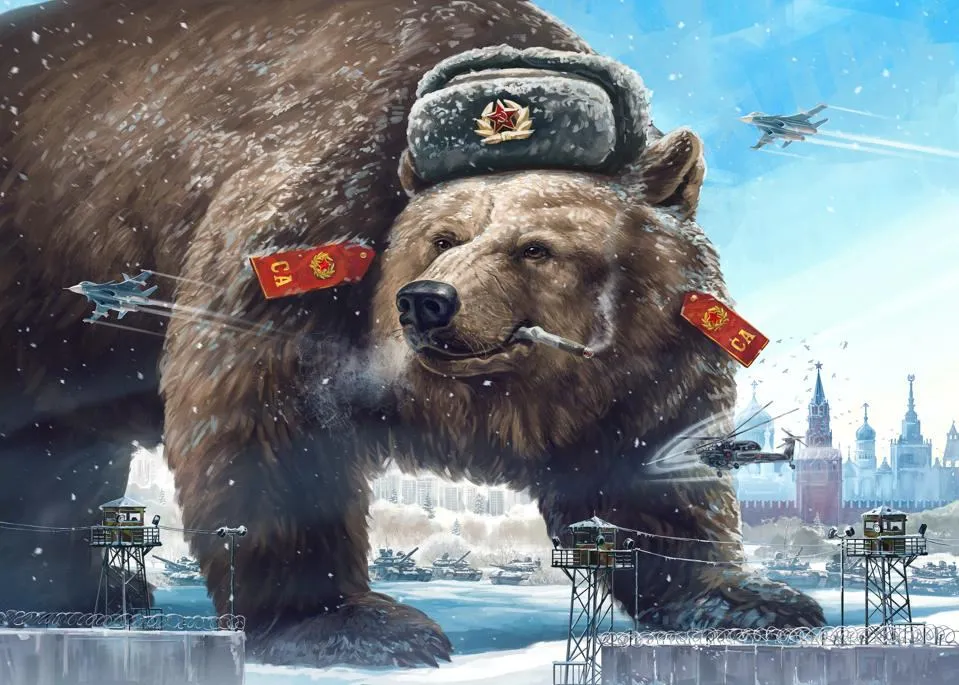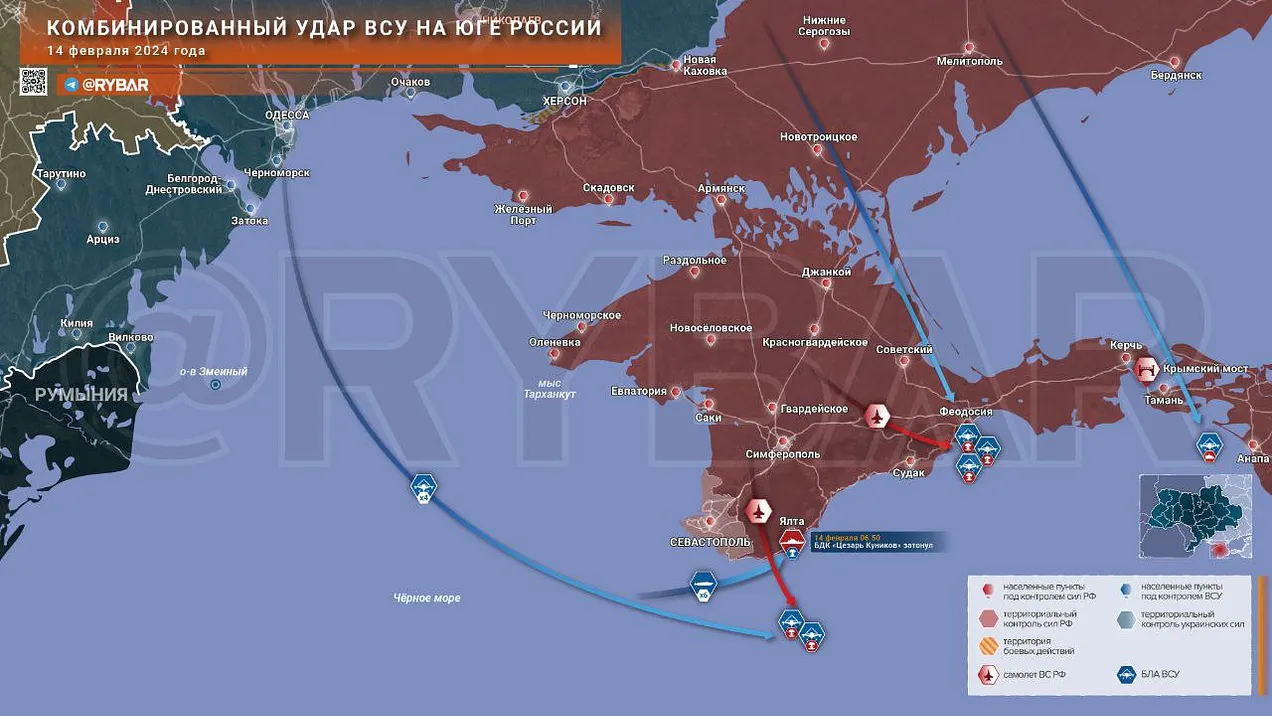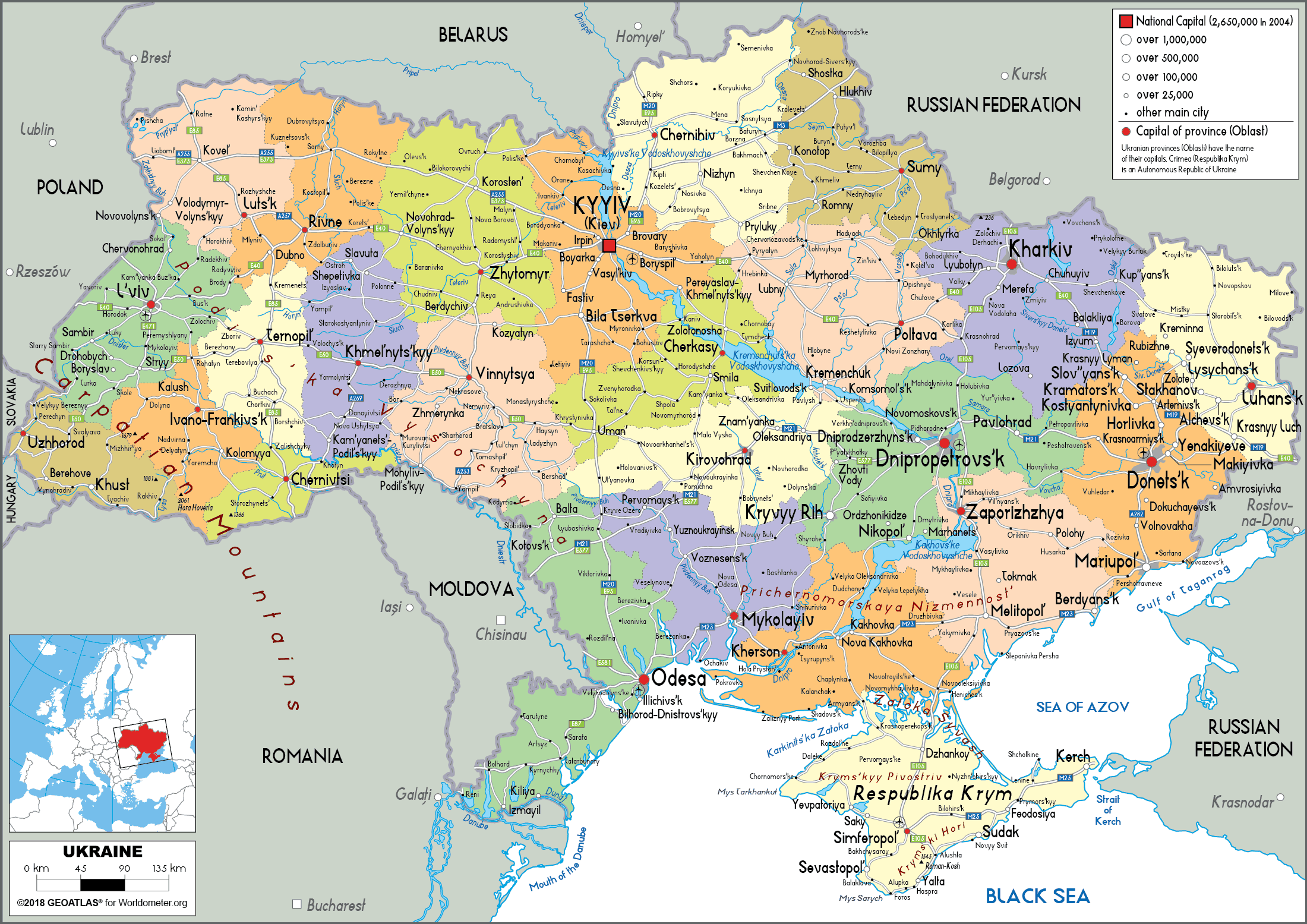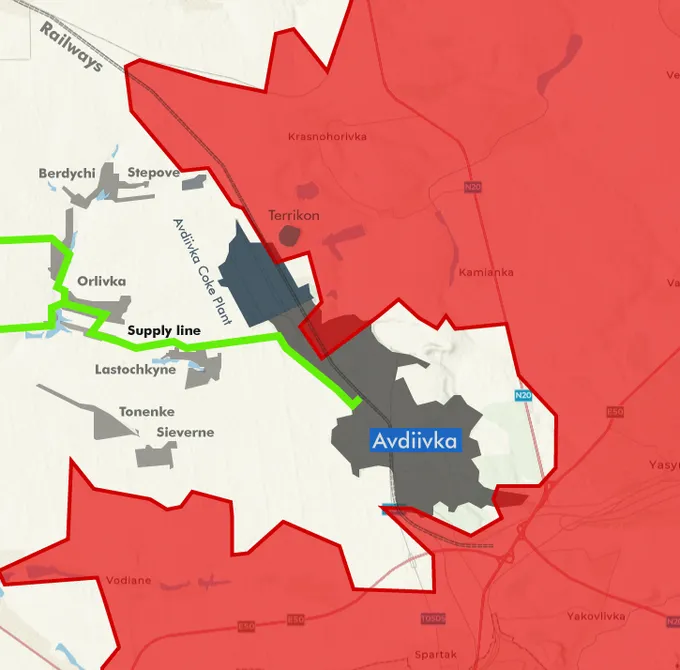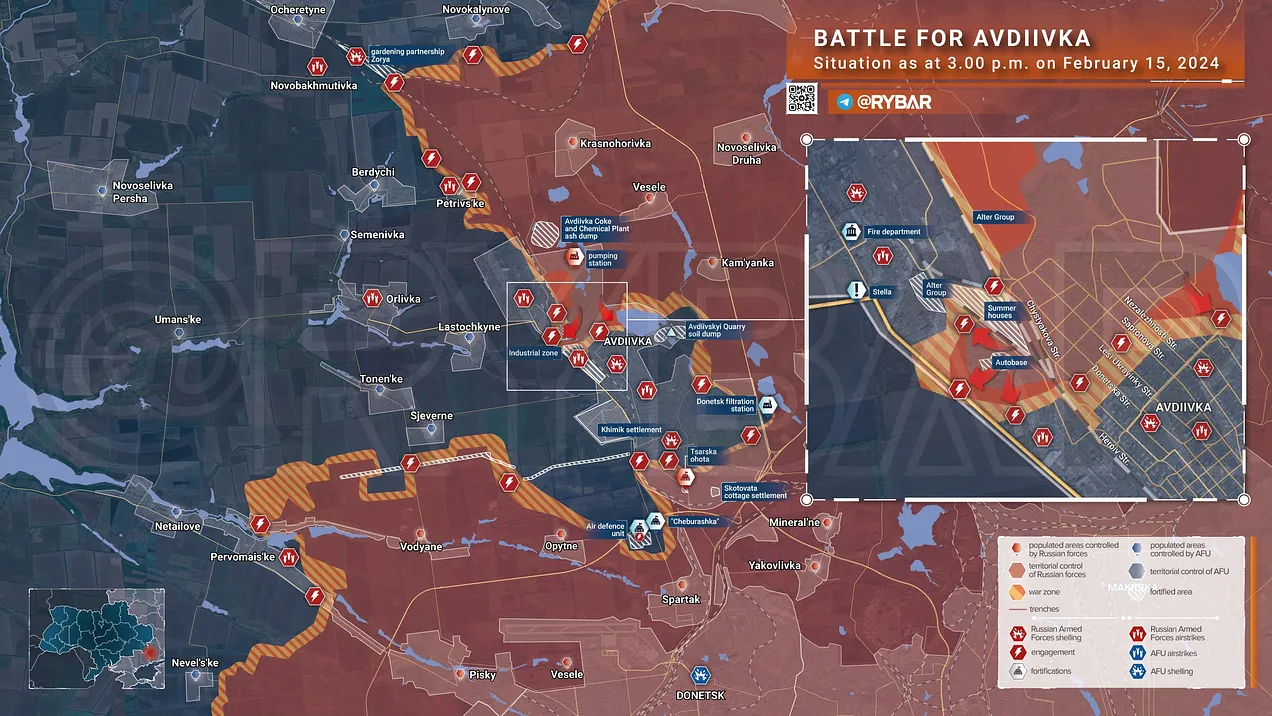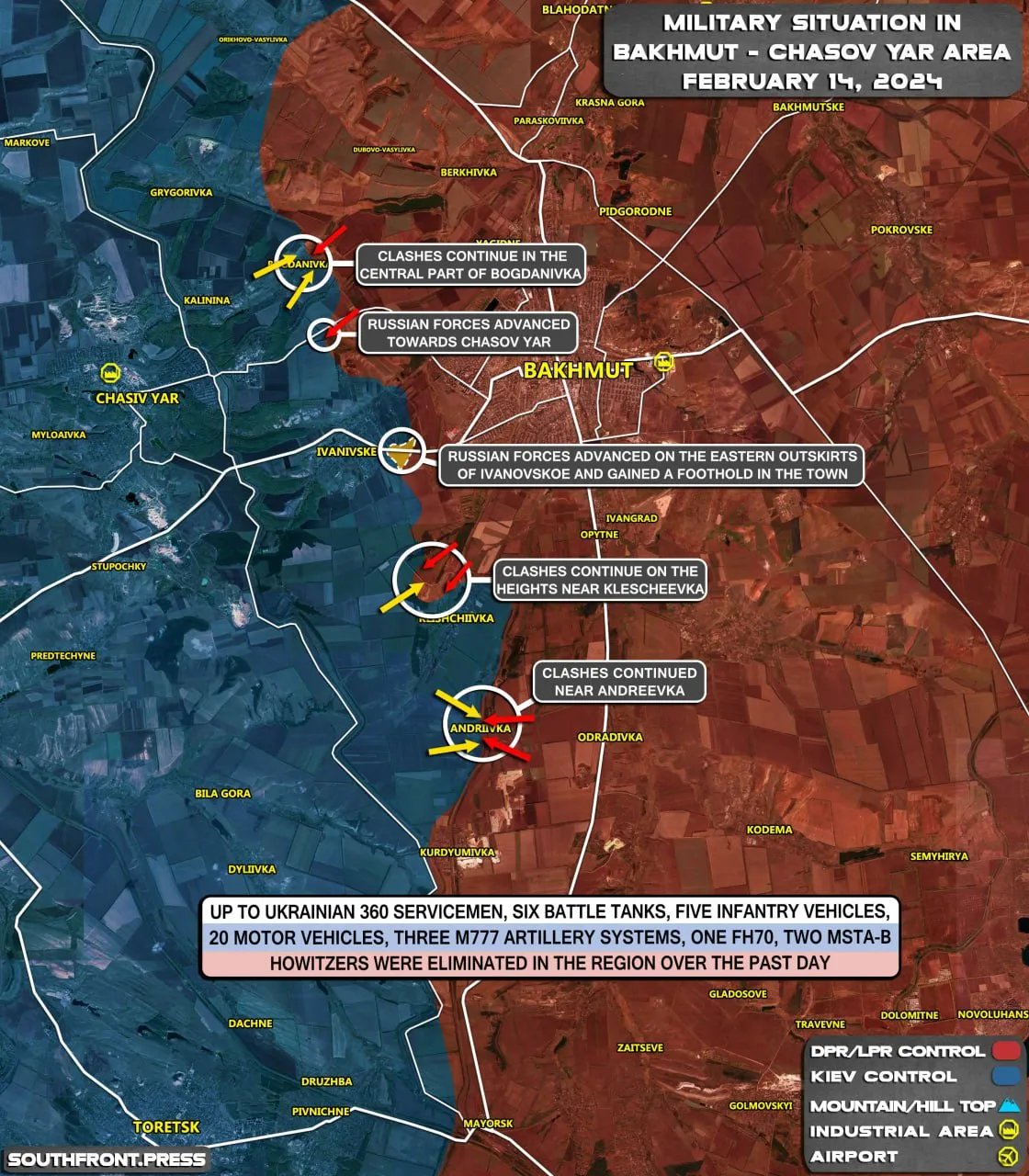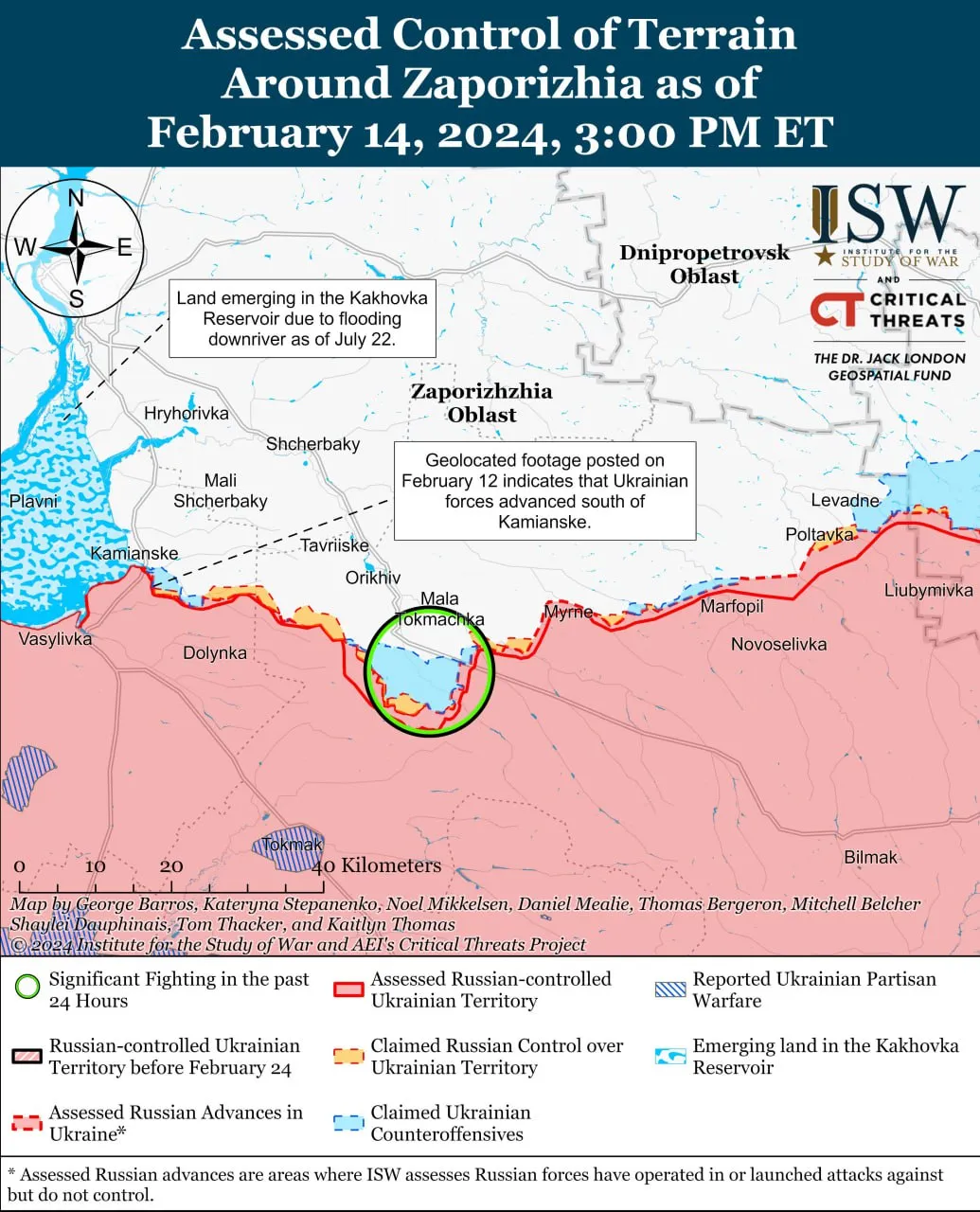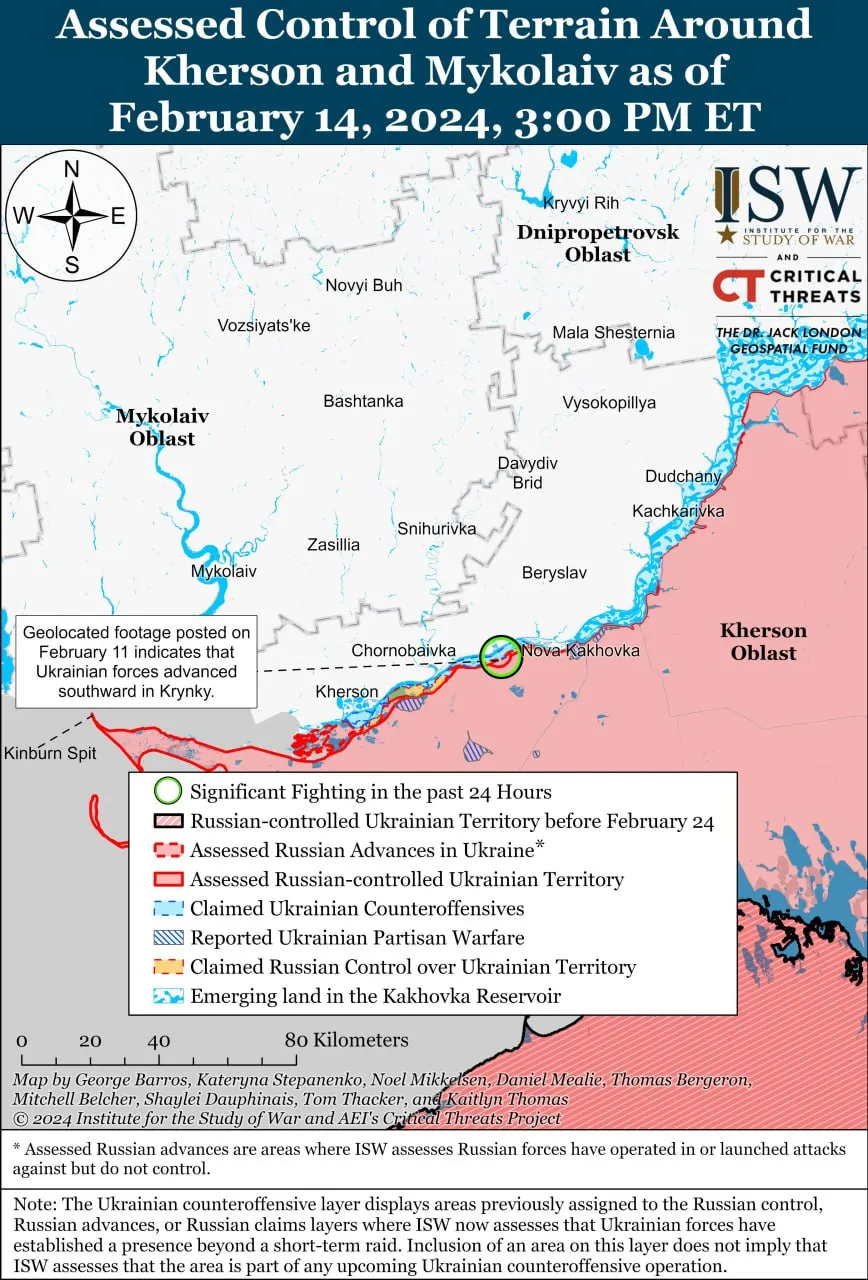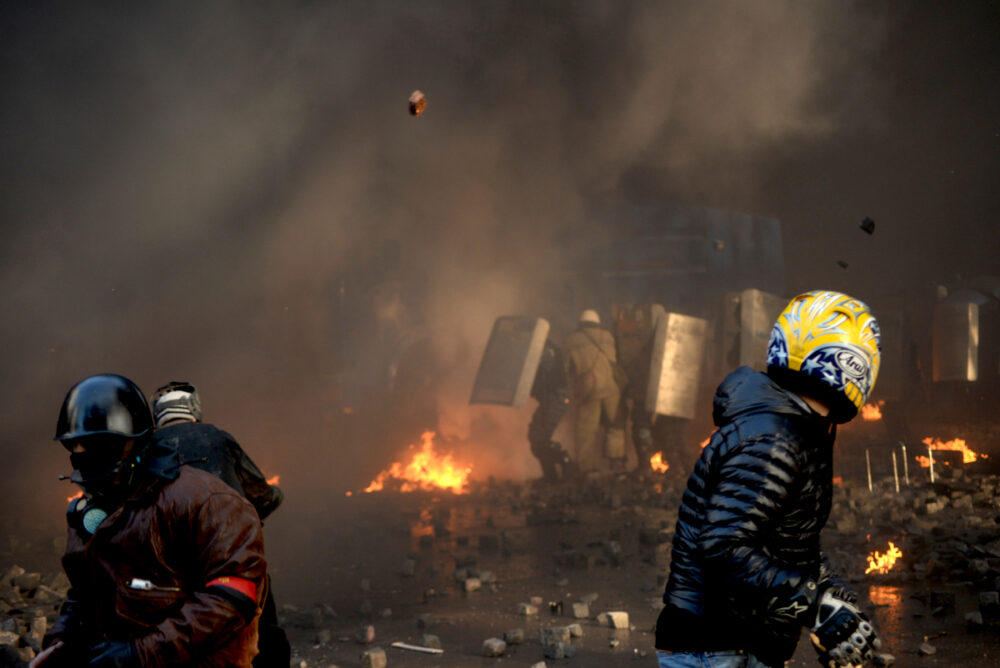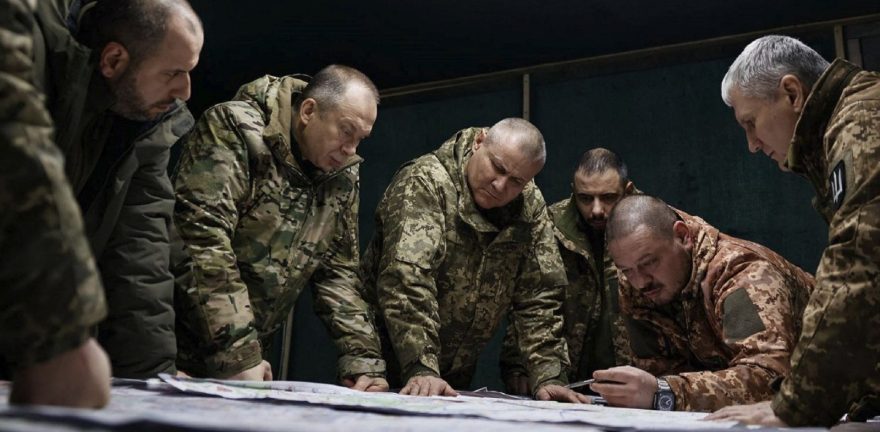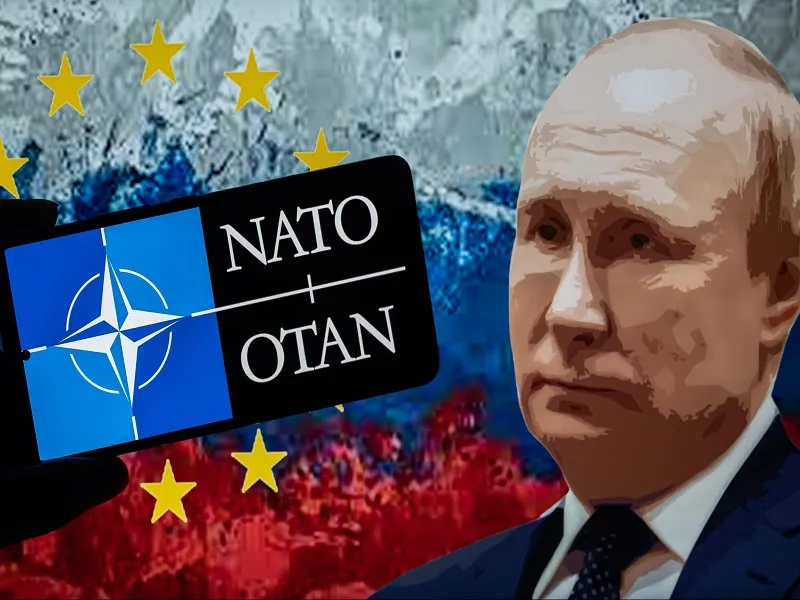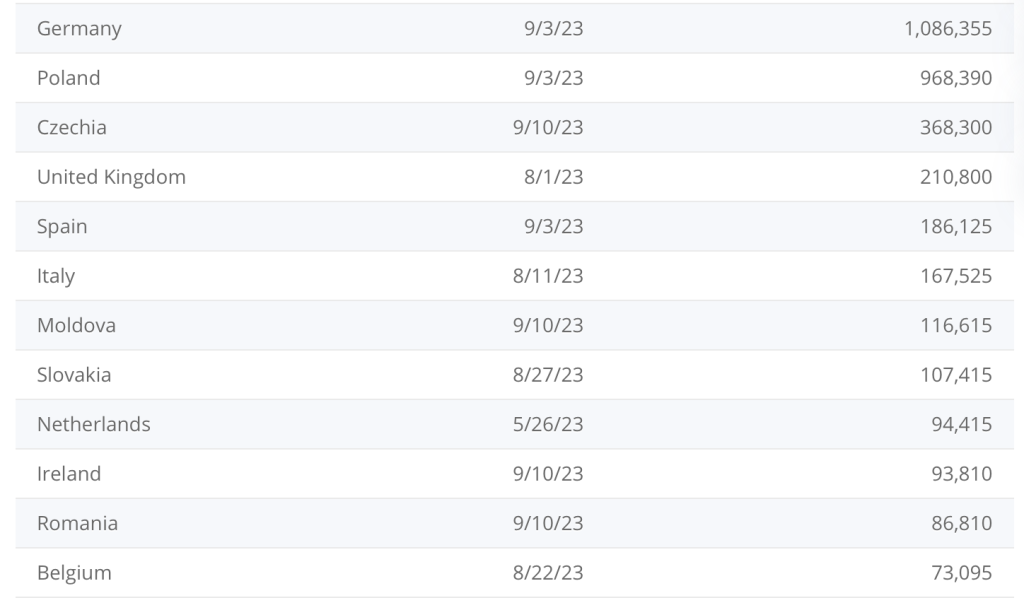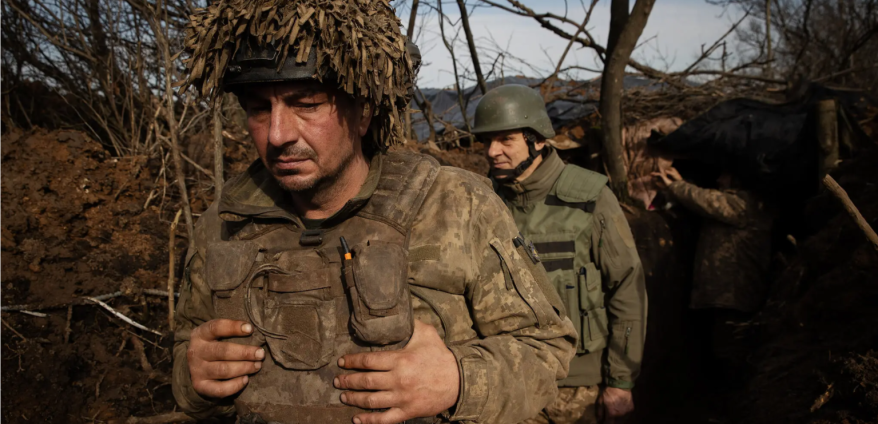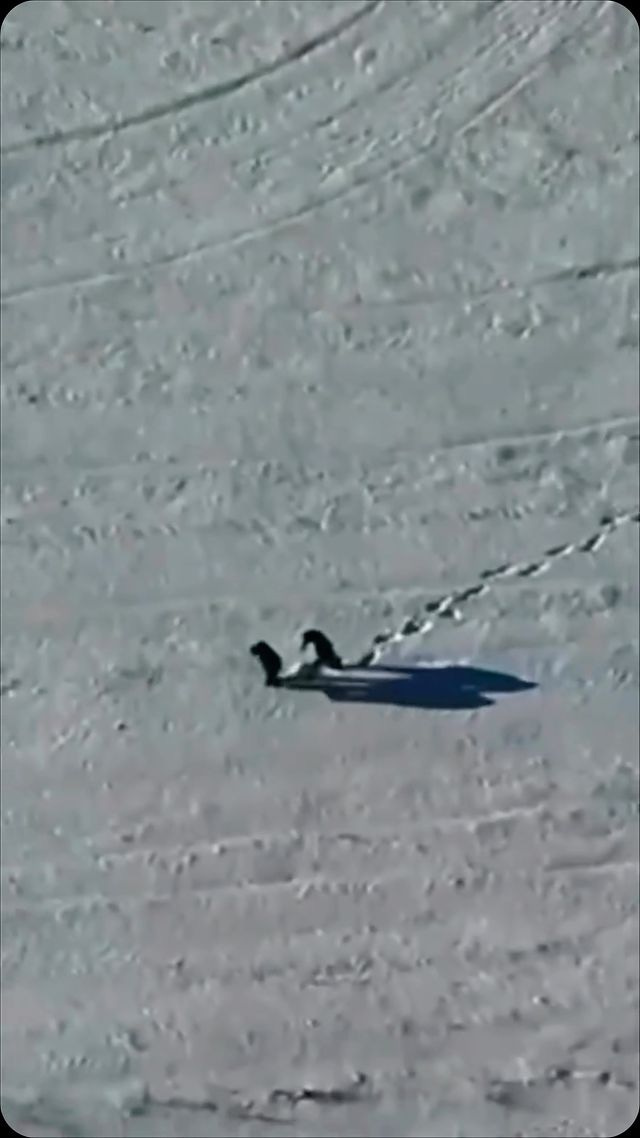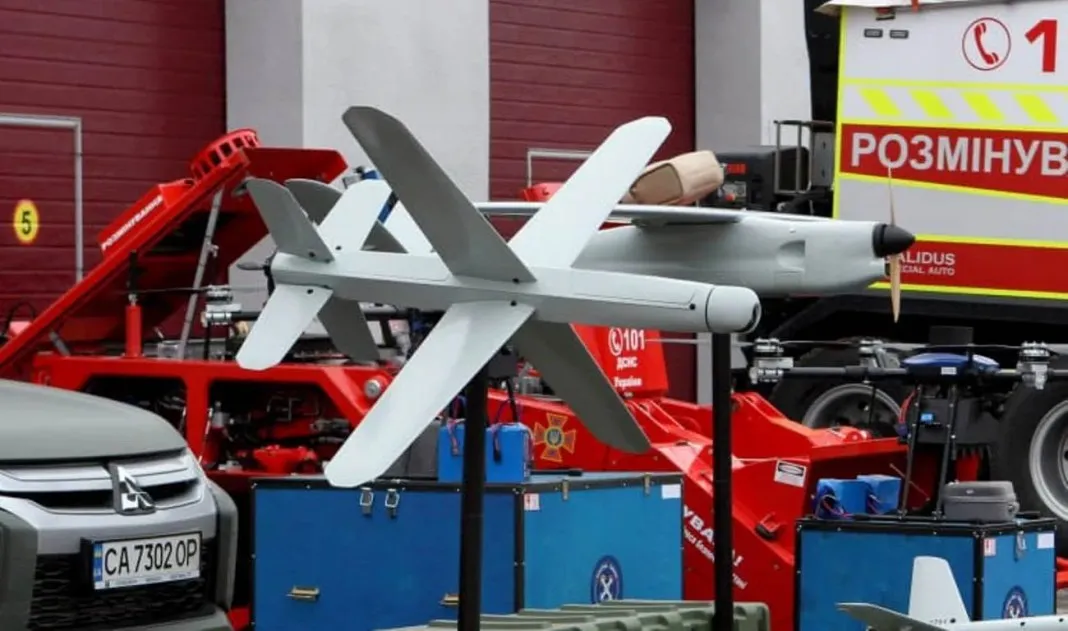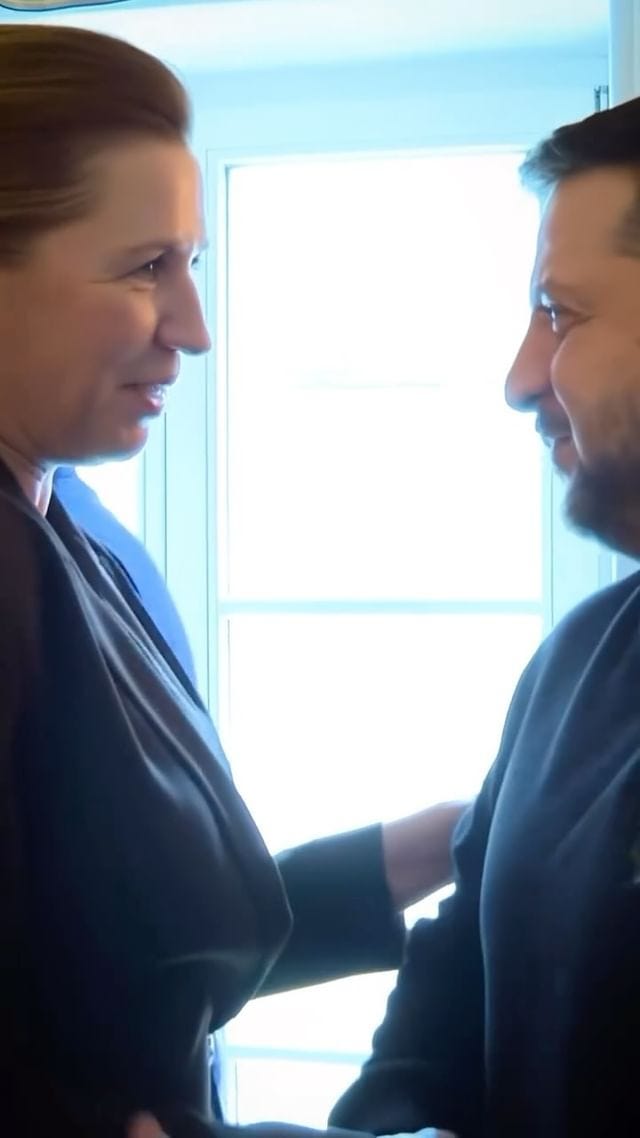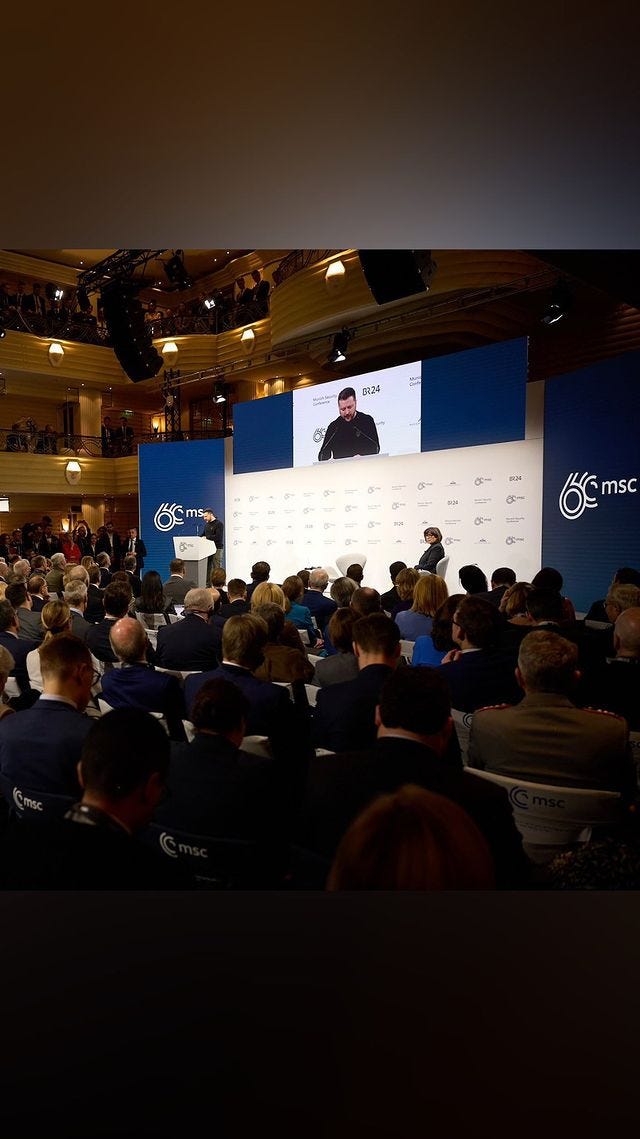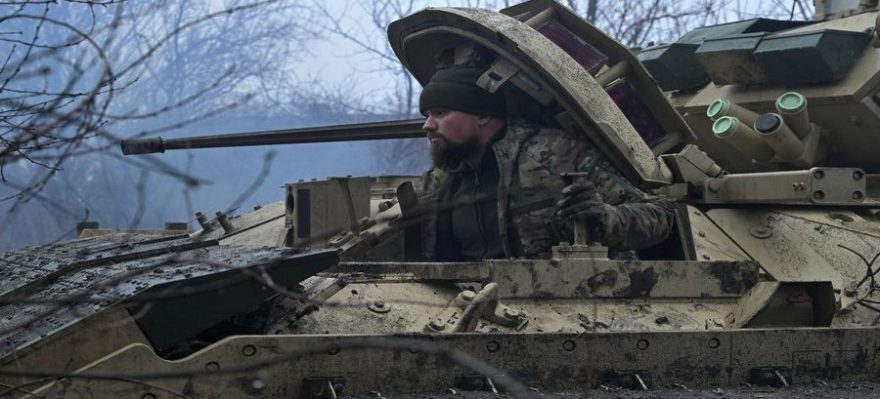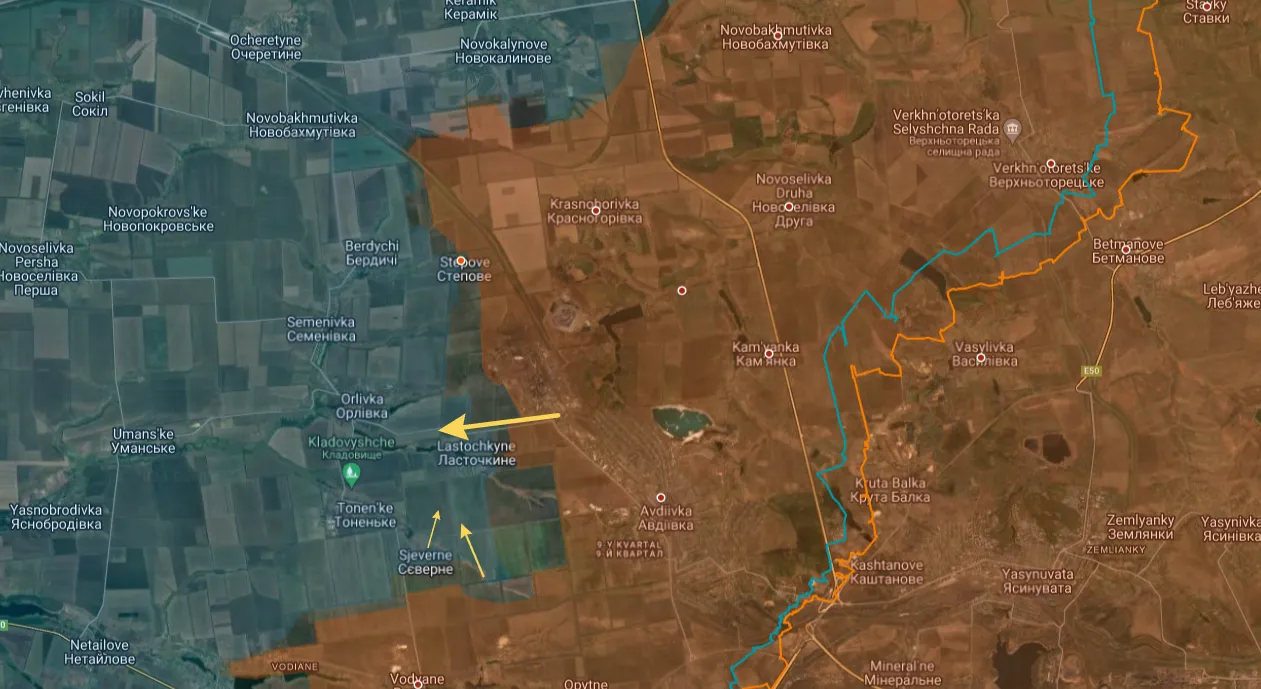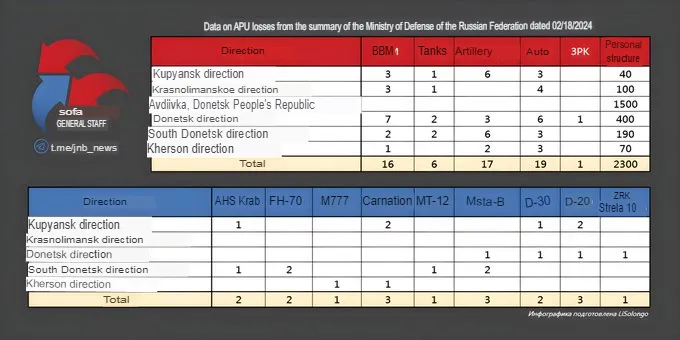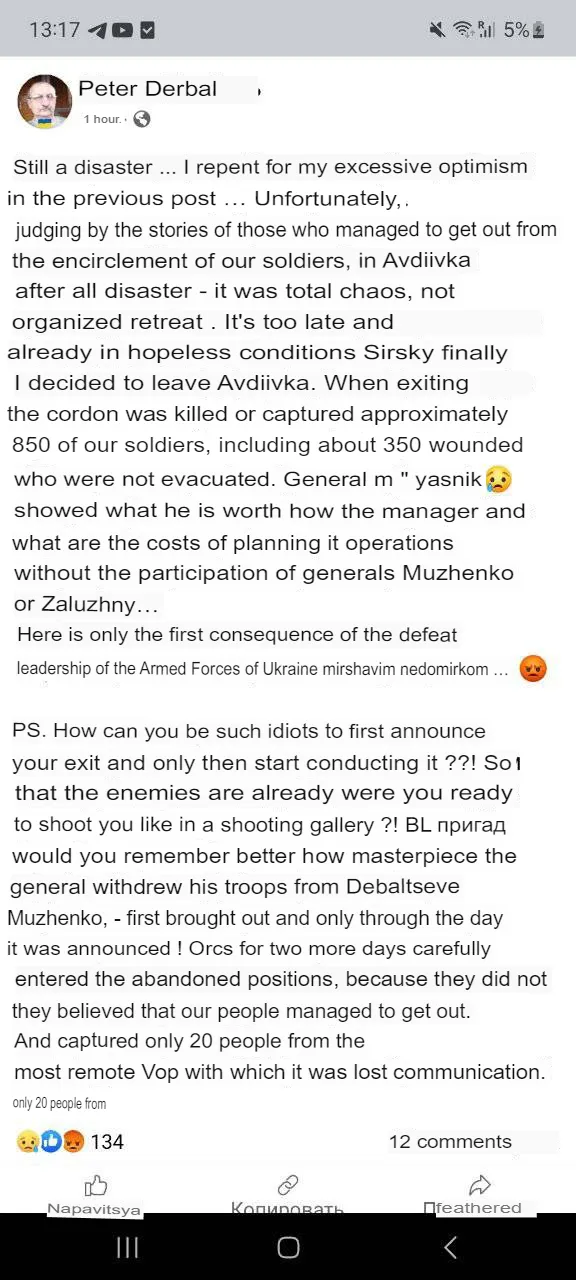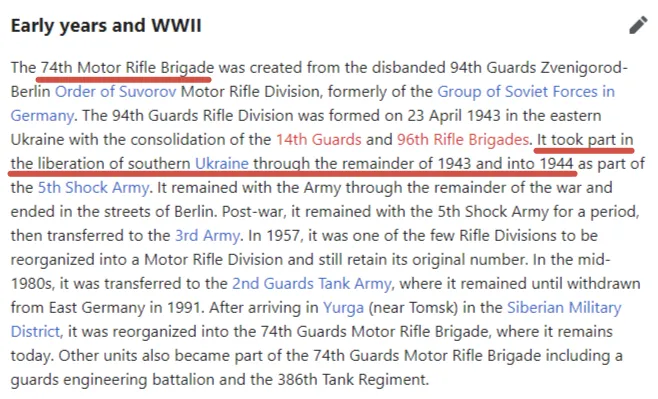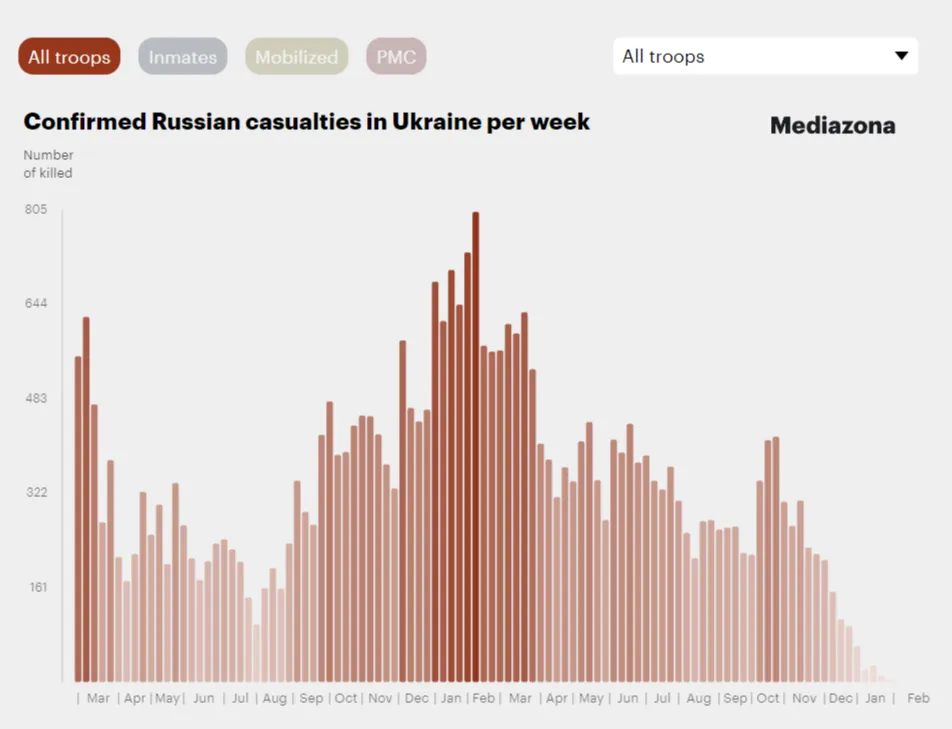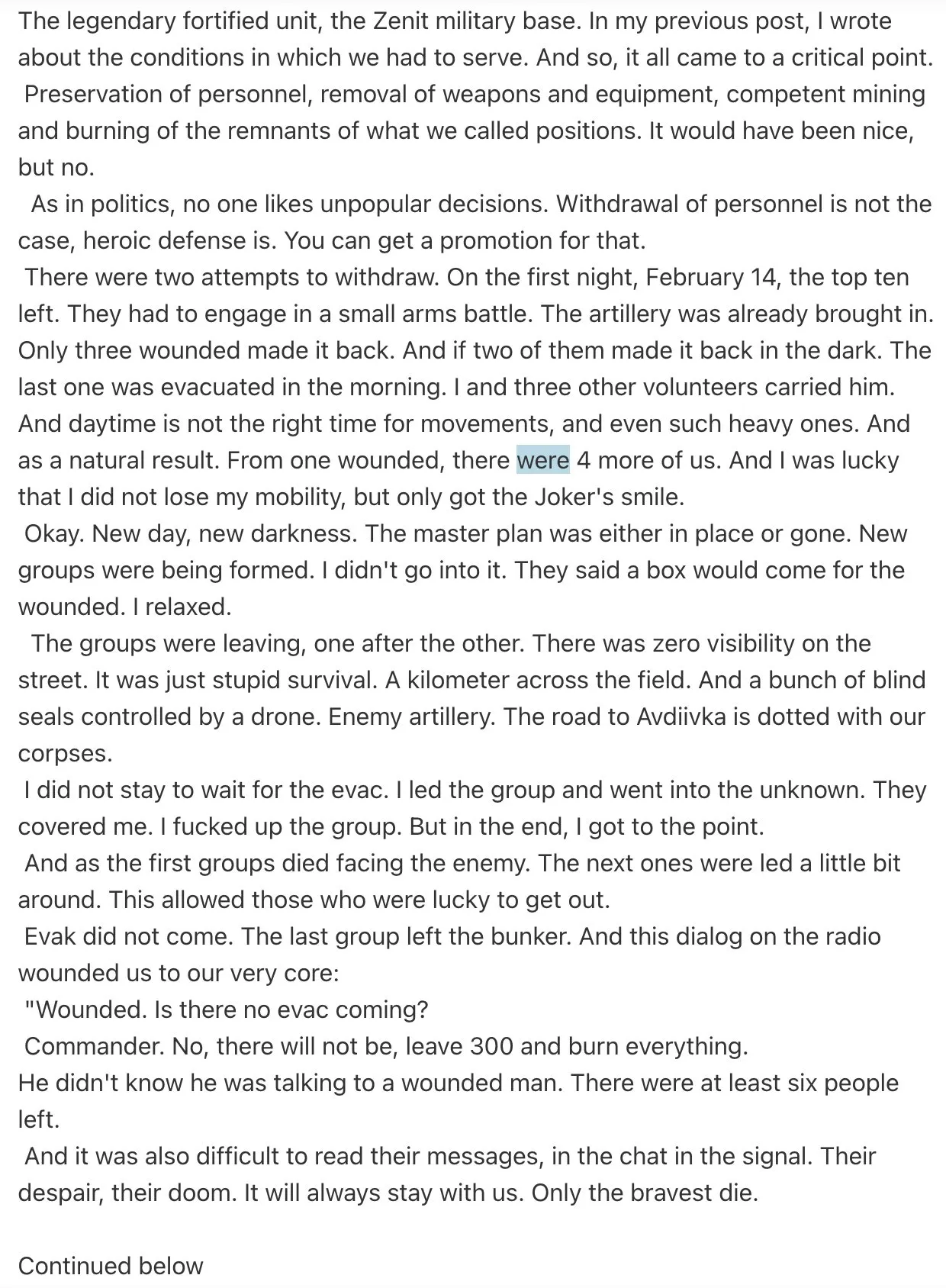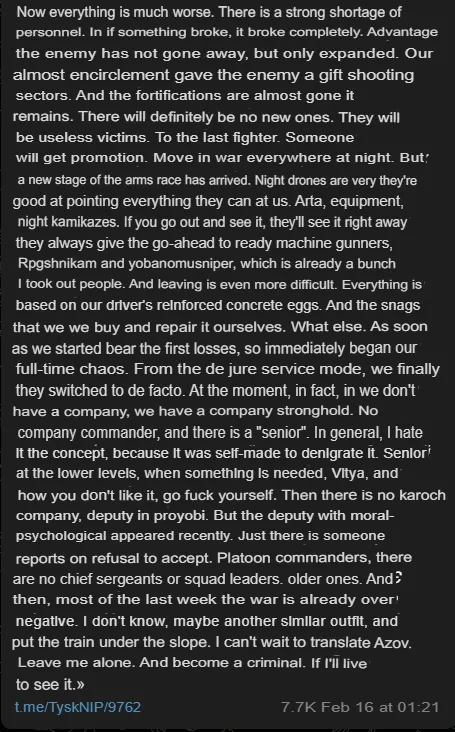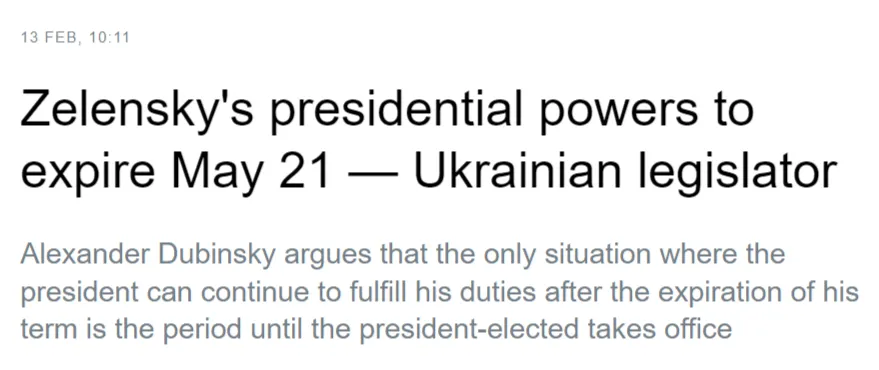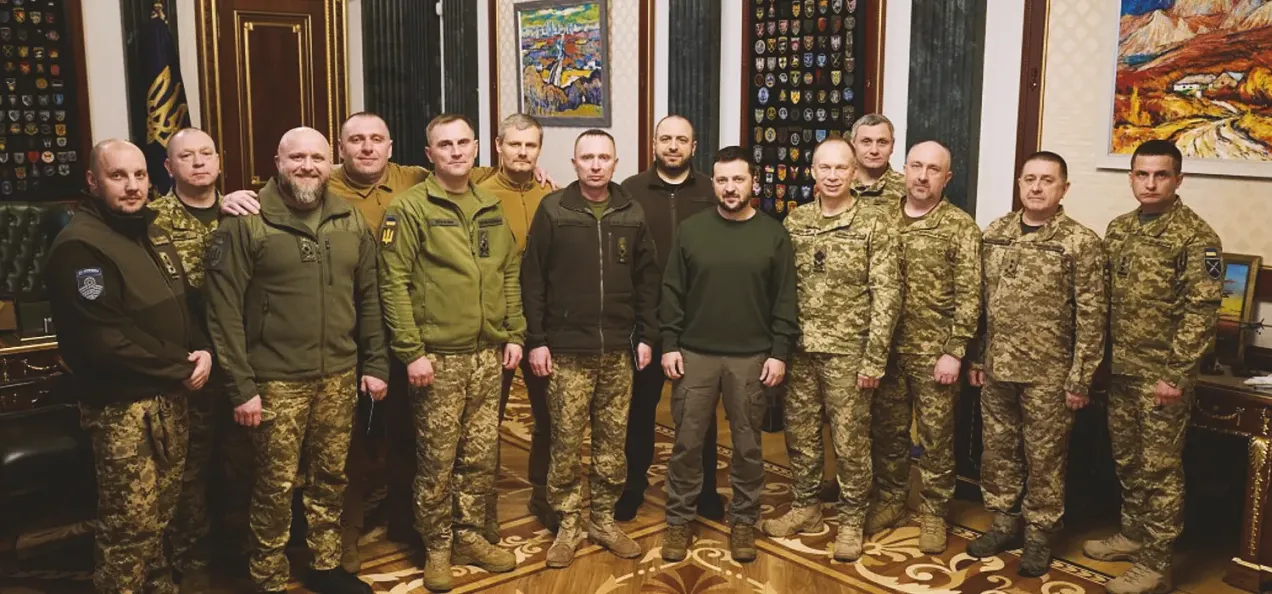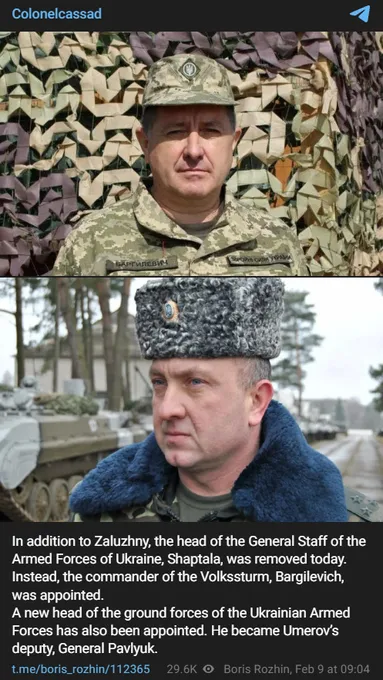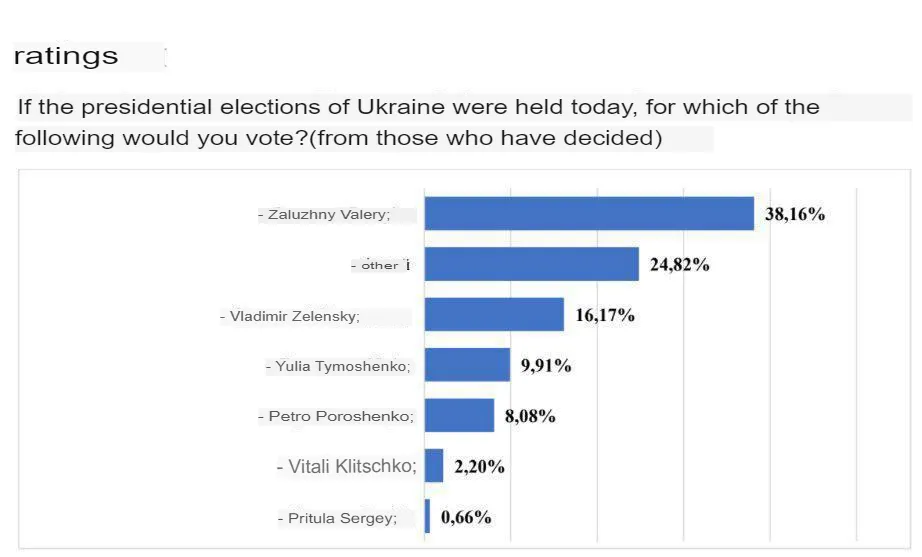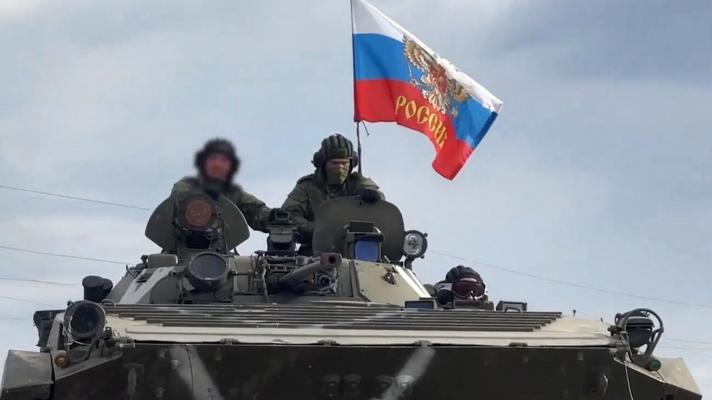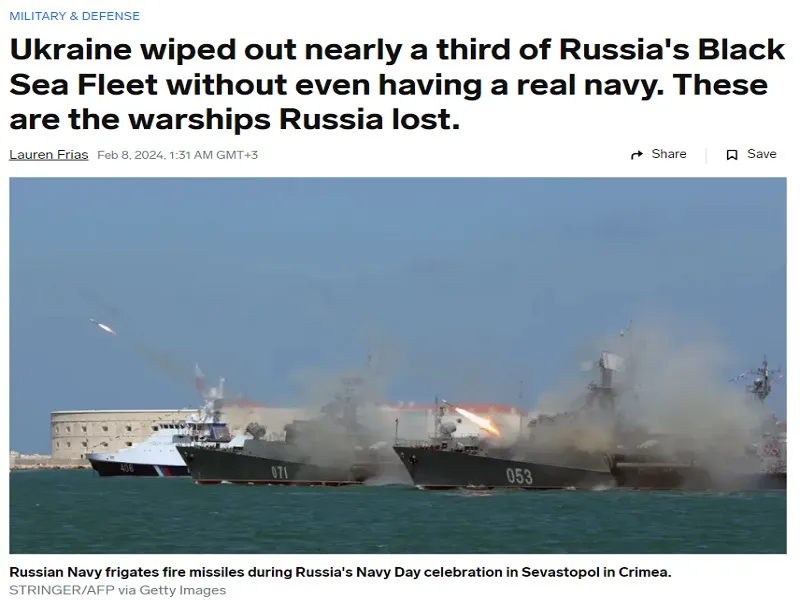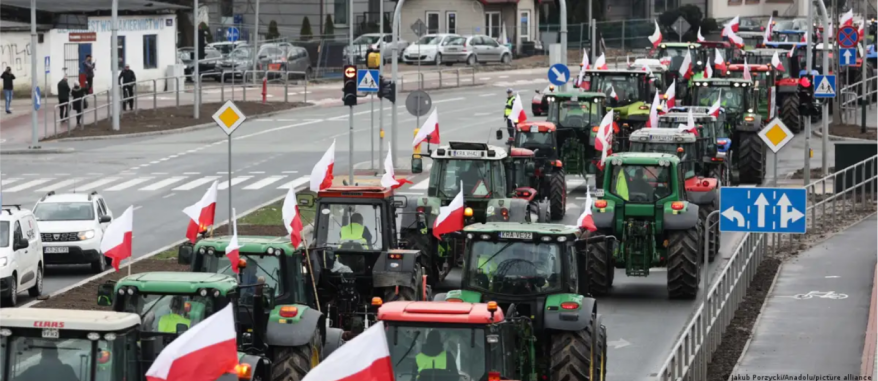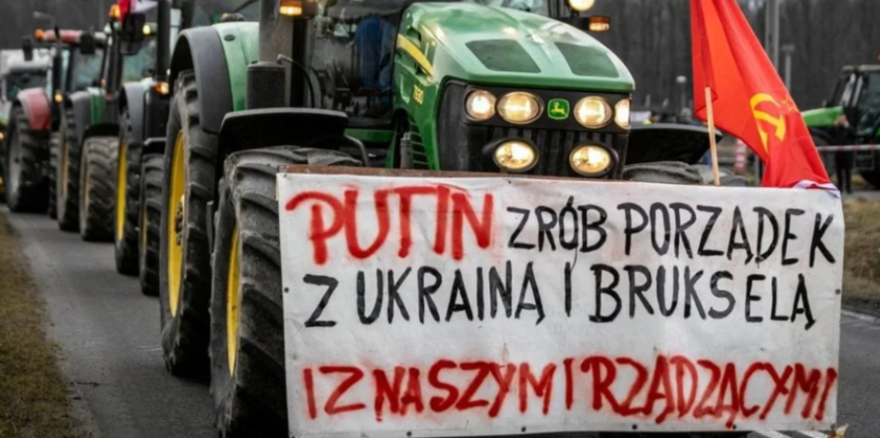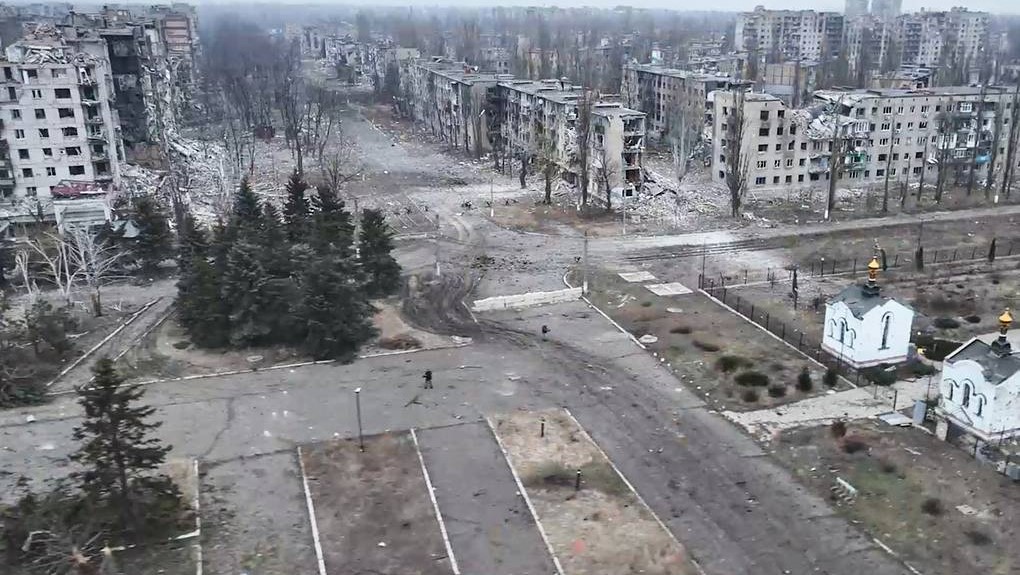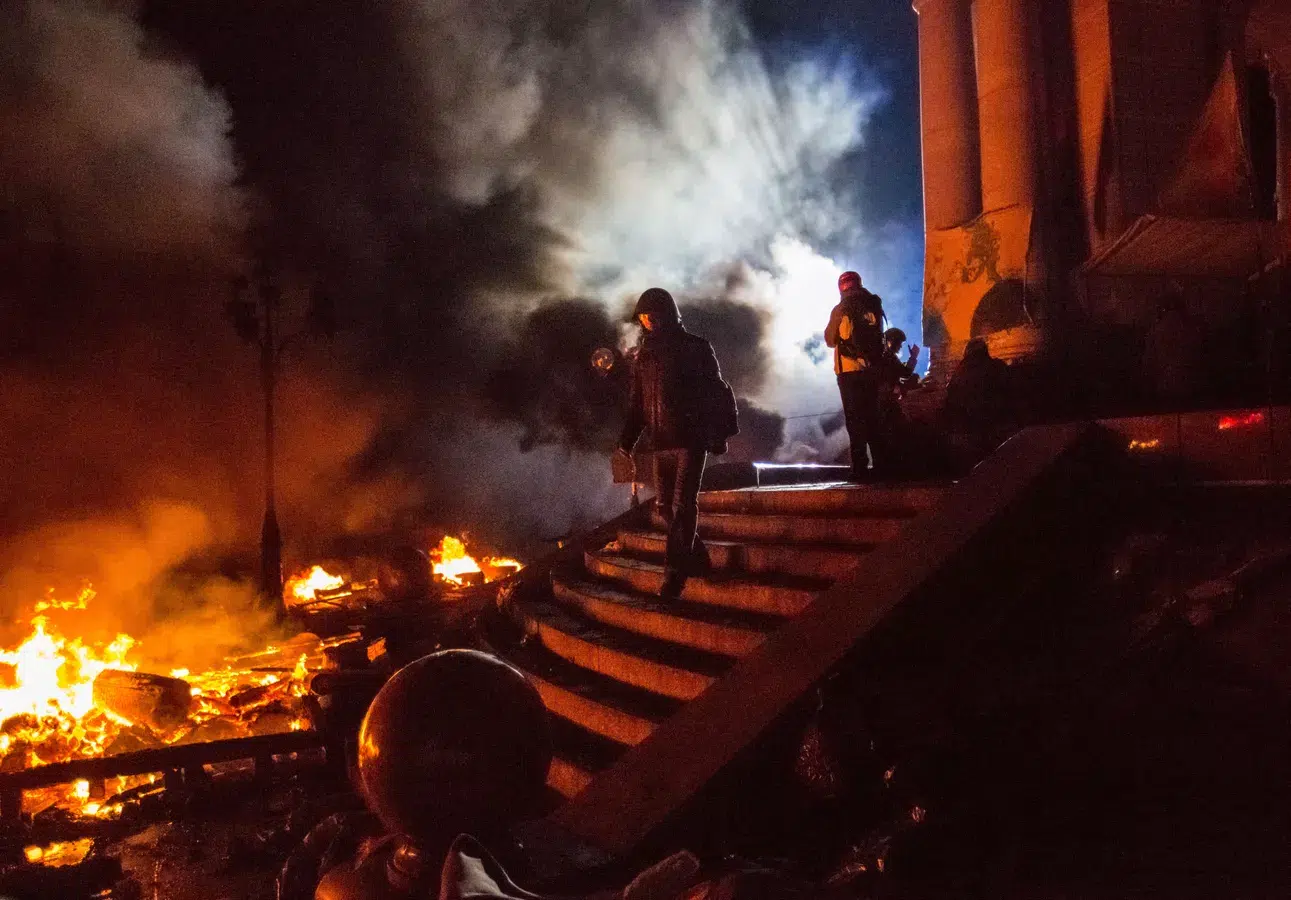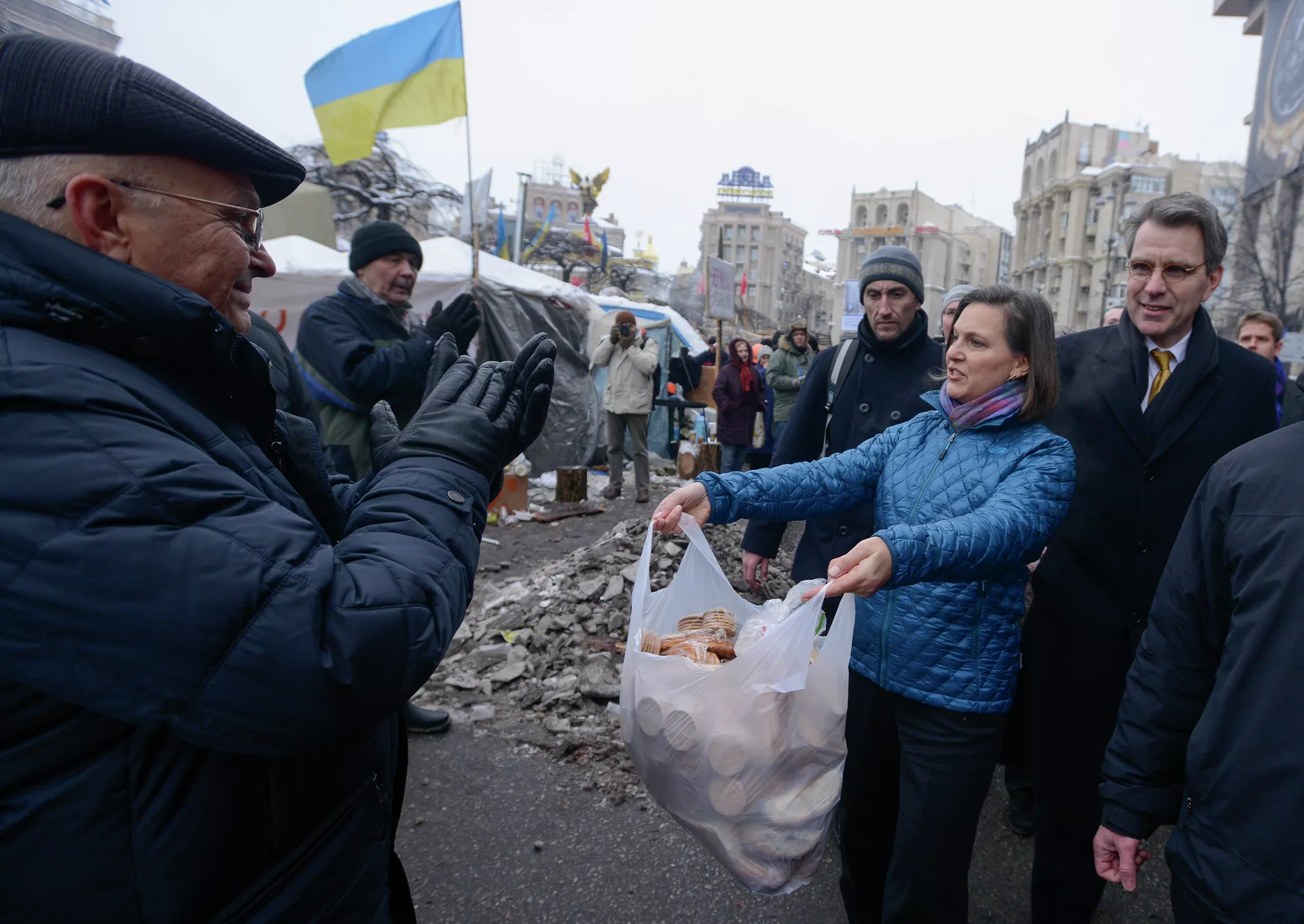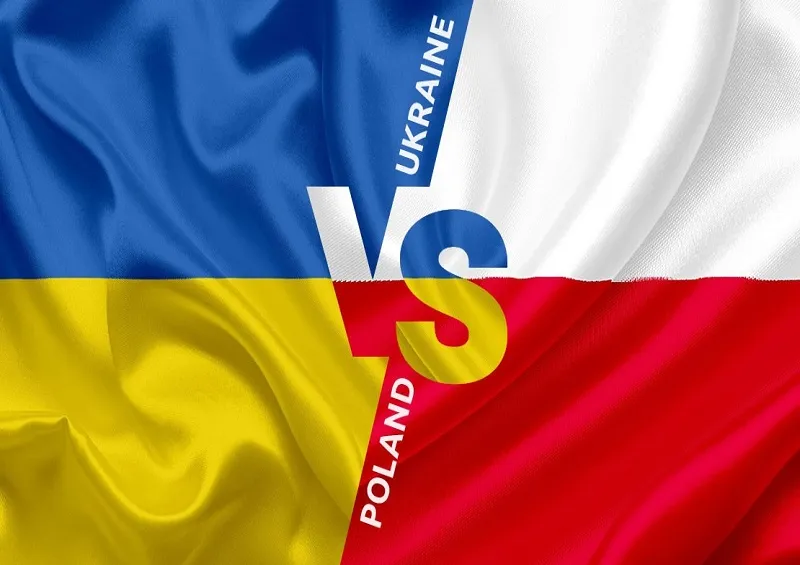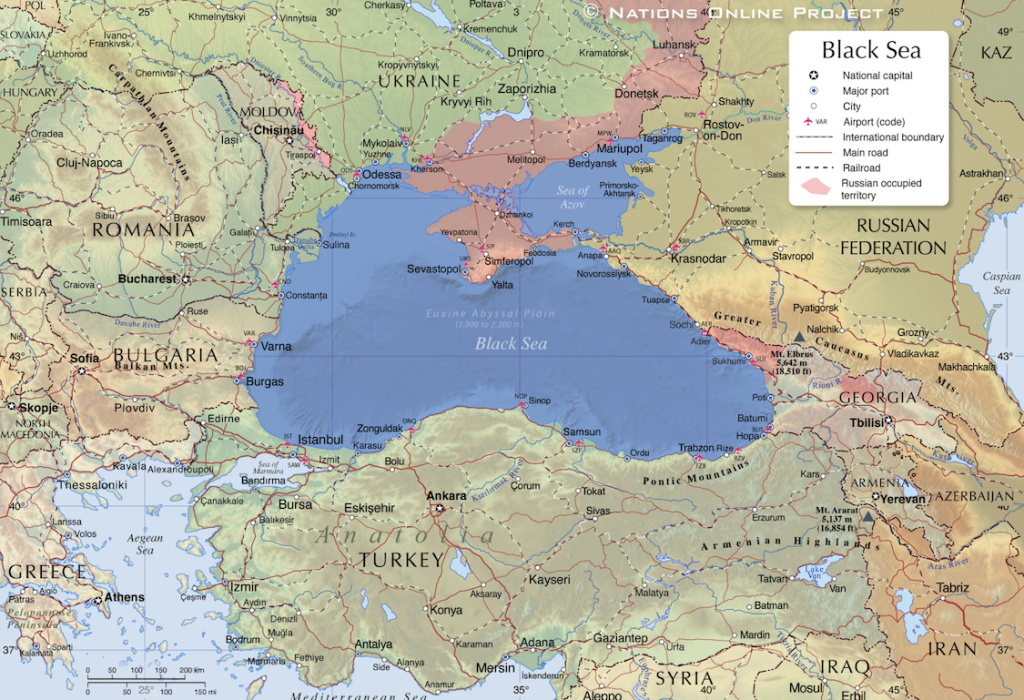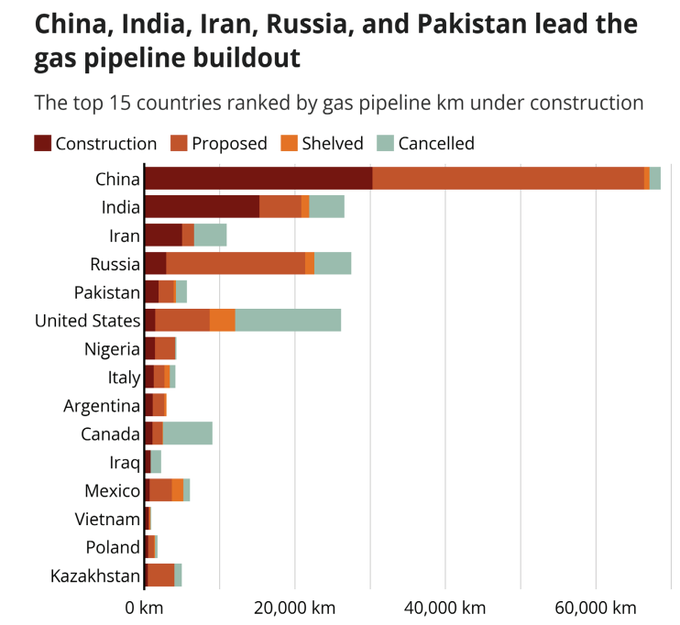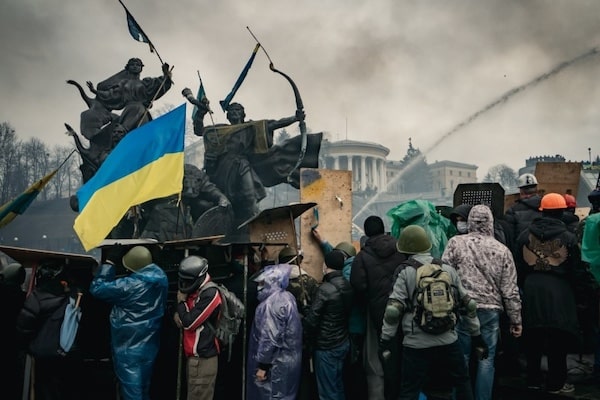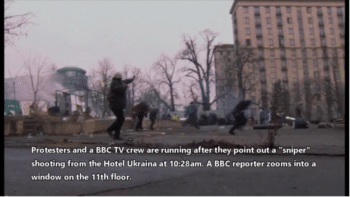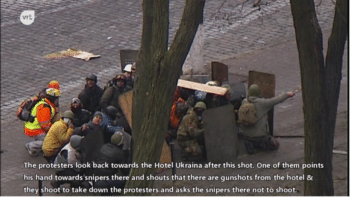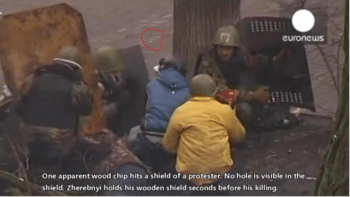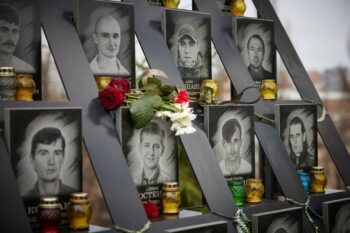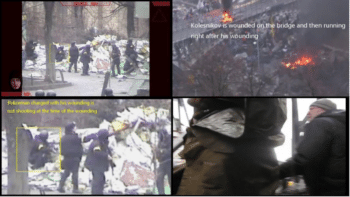POSTED BY @NSANZO ⋅ 14/02/2024

In his visit last week to the White House and in his article written for the Wall Street Journal , Olaf Scholz wanted to make his Government's position clear: Germany will support Ukraine as long as necessary, something to which he also added the demand that other European countries act in the same way. Despite the German Chancellor's initial reluctance to send heavy military material - the recent past of German tanks invading the Soviet Union and the massacre caused in Soviet territories such as Ukraine still had a relative weight in 2022 - Germany has become one of Ukraine's key military partners. As published this week by Detusche Welle, German military assistance now amounts to 17 billion euros, 61% of the 27.8 billion that the country has invested in economic, humanitarian and military assistance to Kiev and in the cost of the refugee population. in its territory. Ukrainian pressure has not yet achieved the announcement of the shipment of long-range Taurus missiles, although it has consolidated Berlin as one of the key centers of the axis of countries that makes it possible for the Ukrainian Armed Forces to continue fighting. The serious insults that the then Ukrainian ambassador in Berlin, Andriy Melnjik, directed at Scholz for his refusal to send lethal military assistance in the first weeks of the Russian invasion were definitively in the distant past when the sending of the Leopard tanks that were going to make the great counteroffensive of 2023 possible.
Although Rheinmetall's Leopards did not live their most glorious days in the Zaporozhie fields and Ukraine was forced to quickly give up the tactic of large armored columns to prevent them from continuing to be disabled in the Russian minefields, the company remains a of the bases of Scholz's strategy. This week, the Chancellor and his Defense Minister, Boris Pistorius, could be seen launching the construction of a new company factory, which must support the Government's push for military production. What's more, the chancellor has called on European countries to leave manufacturing in the background and “focus on large-scale weapons production.” Alleging that “we do not live in times of peace” and forgetting that Germany did nothing to favor the Minsk agreements, which would have made the outbreak of the current war significantly more difficult, and insisting on Russian “imperial ambitions,” the chancellor concluded that “ “If you want peace, you have to deter any aggression.”
The center of the argument is, once again, the question of ammunition. Eleven months ago, the European Union promised to deliver to Ukraine one million rounds of 155 mm ammunition - the usual amount used in, for example, attacks on residential neighborhoods in Donetsk - a promise that it is aware that it will not be able to keep. So far, the Ukrainian war has used material, especially ammunition, far beyond the production capacities of European industry. Faced with the intensity and difficulty of the war, European countries have not reacted by seeking ways to resolve the conflict, but with a renewed spirit of militarization. “Until now we have managed by giving up a lot of what we had,” said Chancellor Scholz, referring to the decline in artillery ammunition reserves in European arsenals (duly exaggerated to justify the increase in production). But given the difficulties of leaving these reserves even lower, for Scholz "it is important that we do everything we can to increase production worldwide."
This increase in production is part of a military Keynesianism that seeks to mobilize the economy through increased production in this sector to compensate for the losses caused by the industrial decline in German manufacturing (largely due to the increase in energy costs). derived from the loss of a cheap and direct source of energy such as Russia). And Rheimentall has special relevance in it, whose factory is expected to be built in less than 12 months and that in its first year it will produce 50,000 rounds of ammunition, to double production in its second year and subsequently reach 200,000. Long-term thinking indicates preparation for a long war, a willingness to maintain militarization beyond the Ukraine conflict, or both. In any case, the figures used continue to be representative of the difficulties of the European industry: according to the European Union, at the beginning of this year Ukraine fired between 4,000 and 7,000 artillery shells compared to Russia's 20,000. In the best-case scenario, Rheinmetall's expected production within a year would be enough for a dozen days of artillery supply for the Ukrainian Armed Forces. Scholz's words about the independence that investments like this guarantee contrast with the European Union's obvious subordination of the US military industry when it comes to maintaining the current war.
The will to support Ukraine's war effort is evident in the German Government, in which after the chancellor's initial doubts, the tougher stance until then maintained by Foreign Minister Annalena Baerbock's Greens seems to have been consolidated. The dynamics of war, which finally dragged Scholz to try to get on a tank for a propaganda event, and the arrival of Boris Pistorius to the Ministry of Defense have ended up consolidating Germany at the forefront of the militarization of the continent and unconditional support for its allies, not only to Ukraine, but also to Israel.
However, the demand to maintain Ukraine and support the country until final victory is not limited to the Government but also extends to the opposition, especially the traditional right of the CDU. In an article published this week, Junge Welt explains that, according to David Arajamia, without support from the West, Ukraine could sustain itself for two months and that, according to The New York Times , ammunition for air defense would run out in March and the artillery, in May. “Then Russia would have won, but at least there would be no more deaths in Ukraine,” writes the outlet, which, however, adds that “it doesn't have to be that way.” That is the introduction to the words of a prominent CDU member this week, who has not only advocated keeping the war, but escalating it. During his visit to Kiev, former colonel Roderich Kiesewetter, “demanded that Berlin allow Ukraine to “take the war to Russia” and “no longer only attack oil refineries,” but also bunkers, command posts and command centers. This would also make the Russian population finally realize what war means.”
To this end, Kiesewetter “demanded that the supply of Taurus cruise missiles, capable of destroying bunkers, be authorized in the short term.” The main German opposition party advocates escalation, the increase in attacks on Russia also as collective punishment against the population and with the use of German weapons that kyiv has been demanding for some time. Last September, at a press conference, the Minister of Foreign Affairs of Ukraine, Dmitro Kuleba, demanded that Annalena Baerbock quickly approve it and, addressing the minister, explained that “you are going to give us Taurus missiles. It's just a matter of time". As Junge Welt recalls , “the chancellor has retained them until now because they could directly attack Russia and would therefore also be a direct reason for war for Moscow.” Despite the important turn he has taken in the last two years to put himself at the head of the belligerent sector, there is still a touch of prudence in Chancellor Scholz who, as Foreign Policy writes this month , is also one of those in favor of stopping, precisely out of fear to a broader war, Ukraine's accession to NATO. It is also Scholz who is delaying the delivery of missiles that Kuleba took for granted months ago.
Kiesewetter's words about the need for German missiles to be used against Moscow are not the only ones of his ideas that rhyme with German intentions of the last century. In words that he later qualified to return to the argument of the “defense of Ukrainian freedom” as a guarantee of European freedom, the politician mentioned in December of last year that some of the most important lithium reserves on the continent are located in Donbass. . Making clear the economic importance that the area could achieve, his comments recall the reason why Donbass was important for Germany on two occasions throughout the 20th century, in which cities like Donetsk experienced two German occupations: after the First World War and during the second. In both cases, industrial resources were the main incentive, although it was during the Nazi occupation when Germany considered natural, industrial and human resources in the form of qualified workers who would be used as slaves in the Reich to be truly strategic . Neither the circumstances, nor the ideology nor the consequences can be considered comparable, but, even so, Donbass remains in Berlin's sights, either to regain its control (in this case for its Ukrainian allies) or to take over its resources.
https://slavyangrad.es/2024/02/14/el-papel-de-alemania/
Google Translator
******
From Cassad's Telegram account:
Colonelcassad
- In the Kupyansky direction, units of the “Western” group of forces repelled four attacks by assault groups of 30, 44, 60 mechanized brigades of the Armed Forces of Ukraine in the areas of the settlements of Sinkovka, Kharkov region and Terny of the Donetsk People's Republic.
The enemy lost up to 180 troops, two infantry fighting vehicles, two armored personnel carriers and five vehicles.
— In the Krasnolimansk direction, units of the “Center” group of troops improved the situation along the front line , and also repelled two attacks by assault groups of the 60th and 63rd mechanized brigades of the Armed Forces of Ukraine in the areas of the settlements of Torskoye and Yampolovka of the Donetsk People’s Republic.
Enemy losses amounted to up to 310 military personnel, two tanks, eight armored combat vehicles, 27 vehicles, as well as a Grad MLRS combat vehicle.
— In the Donetsk direction, units of the “Southern” group of forces occupied more advantageous lines and positions and defeated the manpower and equipment of the 53rd mechanized brigade of the Ukrainian Armed Forces and the 129th air defense brigade in the areas of the settlements of Novgorodskoe and Novokalinovo of the Donetsk People’s Republic.
In addition, five attacks by formations of the 24th mechanized, 5th assault, 79th, 80th air assault brigades of the Ukrainian Armed Forces were repelled in the areas of the settlements of Kleshcheevka, Leninskoye, Shumy, Krasnogorovka and Georgievka of the Donetsk People's Republic.
The enemy lost up to 325 military personnel killed and wounded, a tank, four armored combat vehicles and 25 vehicles.
— In the South Donetsk direction, units of the Vostok group of forces, with the support of aviation and artillery, defeated the manpower and equipment of the Ukrainian Armed Forces in the areas of the settlements of Priyutnoye in the Zaporozhye region, Vladimirovka, Vodyanoye, Urozhaynoye, Prechistovka and Staromayorskoye of the Donetsk People’s Republic.
Enemy losses amounted to up to 250 military personnel, two infantry fighting vehicles, two armored combat vehicles, three vehicles, a US-made M777 artillery system, and an electronic warfare station.
— In the Kherson direction, the active actions of units of the Russian group of troops with the support of artillery defeated the manpower and equipment of the 65th mechanized, 82nd air assault brigades of the Armed Forces of Ukraine, as well as the 23rd brigade of the National Guard of Ukraine in the areas of the settlements of Verbovoye, Rabotino, Zaporozhye region and Nikopol, Dnepropetrovsk region. The enemy lost up to 80 troops and two vehicles.
— Operational-tactical aviation, unmanned aerial vehicles, missile forces and artillery of groupings of troops of the Armed Forces of the Russian FederationThe ammunition depot of the 126th Terrestrial Defense Brigade was destroyed, the personnel and military equipment of the Ukrainian Armed Forces were defeated in 114 regions.
— Air defense systems shot down 63 Ukrainian unmanned aerial vehicles in the areas of the settlements of Kremenets, Aleksandrovka, Kleshcheevka, Mezhevoye of the Donetsk People's Republic, Lyubimovka, Dudchany of the Kherson region, Basan of the Zaporozhye region, as well as three HIMARS missiles.
(Totals subject to question...)
******
Based on the situation in Avdeevka. 02/14/2024
February 14, 12:59

Based on the situation in Avdeevka. 02/14/2024
1. In a number of areas, control was established over the enemy’s key supply road running along Industrial Avenue.
The main exit to the highway is south of the Brevno restaurant.
2. The enemy also confirms the loss of some positions south of the Avdeevka coking plant, including a motor depot, as well as some positions south of the site where Avdeevka was cut into 2 parts.
3. The Russian Armed Forces also continue to slowly advance along the shore of the flooded quarry, gradually occupying residential buildings in the private sector.
4. There is currently no operational environment yet - Avdeevsky Coke retains supply capabilities.
The enemy forces stuck in the city are supplied through 2 secondary roads from the village. Orlovka. Artillery and drones are already working on them, but it’s too early to talk about complete fire control.
The enemy is trying to maintain supplies through them.
5. In the area of the village Stepovoye and Ocheretino - no changes, positional battles continue.
The enemy continues to accumulate forces to the west and northwest of the city for possible counterattacks.
6. In the DFS area - no changes, as in the industrial area.
Positional battles continue to the west of the "Tsar's Hunt".
To the south of the "Tsar's Hunt" the enemy positions were pressed in the direction of "Cheburashka" and "Zenith".
There is also pressure from the village. Experienced to surround Zenit and Cheburashka. The enemy admits the loss of a number of positions.
7. In n.p. Pervomayskoye, fighting continues in the center of the village.
The enemy admits the loss of some positions.
At n.p. Northern - no changes.
8. The enemy has already brought into action its reserve in the form of "Azov", which has been suffering losses for several days.
https://colonelcassad.livejournal.com/8961652.html
"Caesar Kunikov" died
February 14, 11:58

At night, the Black Sea Fleet lost the large landing ship "Caesar Kunikov". If they coped with the air attack (6 drones were shot down in the Crimea region), then they again couldn’t cope with the sea drones. The enemy has already posted a confirming video.
The enemy scored hits on the large landing craft operating off the coast of Crimea, after which it tilted and went on board. In the morning, a rescue operation was carried out in the area of the impact.
As usual, target designation for the strikes was provided by the RQ-4 Global Hawk unmanned reconnaissance aircraft. Current measures to combat maritime drones in the Black Sea clearly appear insufficient.
Also, so far nothing can please us with domestic unmanned marine developments, which were announced back in 2022.
https://colonelcassad.livejournal.com/8961399.html
Syrsky on Red Square
February 13, 18:33

Syrsky on Red Square during the parade in 1986.
https://colonelcassad.livejournal.com/8960094.html
Hit on Selidovo
February 13, 16:18

According to Selidovo.
1. Of course, there are no 1500 killed there. This is approximately how much was on the training ground in formation at the time of the impact. There is no objective data yet on exactly how many of them were killed and how many were wounded. For now, we can say that the enemy suffered serious one-time losses in manpower - one of the largest over the past year.
2. The fact that the calculation was to destroy manpower is evidenced by a cascade of strikes, including the use of cluster munitions. This may be one of the most effective uses of cluster munitions in the entire war.
3. The enemy will, of course, look for those residents in the territories occupied by the Armed Forces of Ukraine who led the attack, since such attacks are usually associated with both technical reconnaissance work and additional guidance on the ground, so it is not surprising that the SBU is looking for who helped lead the attack.
4. The enemy will traditionally keep secret and underestimate losses, and they will try to spread the total number over time. Specialists tracking obituaries are already at a low start. I would not rule out that some of the corpses will be kept in refrigerators for some time or even declared “missing near Avdiivka.” And then you don’t have to pay money and you don’t have to admit big numbers.
https://colonelcassad.livejournal.com/8959855.html
Google Translator
******
Ukraine Collapse Starting. What Happens Next?
Posted on February 13, 2024 by Yves Smith
Ukraine now resembles a patient with a terminal disease who is staring to exhibit multi-organ failure. His longevity is still uncertain but is measured in months, not years. It’s not obvious which system will go first and whether that one by itself will be fatal or will kick off the terminal cascade. But the odds of pulling out of the current trajectory are poor.
We’d like to step back and consider what Russia’s choices might be as Ukraine starts coming unglued.1 Many commentators are focusing on the question of territorial acquisition because it seems to be hard to get out of the habit of thinking that way. Recall that the object of war, per Clausewitz:
War therefore is an act of violence intended to compel our opponent to fulfill our will.
Russia may have a fundamental problem. It has arguably been Putin’s top objective, certainly with respect to the US and Europe, to come up with a new security architecture. That was the theme of his much-hated speech at the Munich Security Conference in 2007: No one is safe until all of us are safe.
Russia is very far along with one of its key aims, demilitarizing Ukraine, by virtue of not only depleting weapons stocks across the West and producing armaments at a rate the West cannot match, but sadly also by killing or maiming many of Ukraine’s service-age men, and now even women. Ukraine is considering and likely to pass what amounts to a mass mobilization bill. The US is now also committed to arming Israel; it’s not clear, given rising criticism across Europe of Israel’s genocide, if and when its allies will cut back on weapons supplies given their supposed disapproval. While it was noteworthy that the hyper aggressive German defense minister, Annelina Baerbock, whose country is defending Israel at the ICJ, criticized Israel’s conduct in unvarnished terms. But the tweet below points out, Germany has not yet cut back on weapons supplies:
The US and key European leaders are whipping up a “Russia will soon be in Paris” frenzy across the continent. And the problem Russia has is that, as the US has admitted, the war in Ukraine is a proxy war, with the US and NATO as the protagonists.
Even though Russia will soon be able to compel Ukraine to fulfill its will, it can’t do that to NATO, its ultimate opponent. So what is Russia’s next best outcome?
Our colleague Aurelian posited that Europe would eventually retreat into what he called “epic sulking” over its loss in Ukraine. But the level of “We need to rearm” hysteria means that will be some time in coming. Fortunately for Russia, the economic cost of Europe divorcing itself from cheap Russian energy and its accelerating de-industrialization will limit how much Europe can do to live up to its fist-shaking. The US inability to reverse its long-standing, poor procurement practices (overpriced fussy weapons that not only are comparatively few in number but also don’t perform all that well in combat conditions) also means it seeming vanishingly unlikely to catch up with Russia as an arms designer and maker.
And in fact, when the US and Europe have finally internalized that they can’t outdo Russia’s war machine, and its overmatch in most important weapons categories along with its nukes amount to a formidable deterrent, they may indeed settle down to licking their wounds. But absent regime changes all across Europe, which is not impossible given the number of elections this year and voter unhappiness about their own strained budgets and officials prioritizing warmongering over domestic welfare, Europe will want to engage in as much threat display as possible and stoke hostility towards Russia among its citizens.
The fact that Russia is conducting what it has conceived of as a special military operation, as opposed to a full bore conventional war, where it would have flattened administrative buildings in Kiev and taking out the Internet and cell phone service long ago, is now leaving Russia with choices that a normal successful combatant in conflict would not face. Normally if you prevail, you occupy the enemy’s territory, kill or enslave its men, and take the womenfolk. The modern variants are manage the occupied territory badly and turn it into a near failed state (Iraq) or rebuild and turn it into a vassal (Germany and Japan).
By contrast, as we’ve intimated and Black Mountain Analysis has described, it is conceivable that the Ukraine military could break terminally not all that far from where the line of contact is now, which contrary to most historical wars, is well away from the government/administrative center. It’s suited Russia wonderfully well to have Ukraine keep feeding weapons and men into contested spots on the line of contact. It’s not far from Russia, facilitating resupply and even troop rotation. By contrast, Ukraine has had to schlepp all those wonderwaffen across the country. And Russia is also able to destroy anything that might resemble a military training center, further impeding Ukraine replenishing its now enormous losses.
For those who have been following the conflict, the fact that Ukraine forces are starting to fail is no surprise. Ukraine is on its fourth army, throwing barely trained troops, now including women, against Russia soldiers, with a predictably short life expectancy.
As many commentators have pointed out, General Zaluzhny’s replacement, Oleksandr Syrsky, is in synch with Zelensky’s destructive inclination to try to hold ground at all costs. Syrsky is the “Butcher of Bakhmut” for feeding more men into the Russian meat-grinder in accordance with Zelensky’s wishes and apparently his own predisposition. Note that “Zaluzhny was liked by his men” seem overdone in light of the horrific death count; he’s rumored to have given preferential treatment to the Neo-Nazi contingents which seems a more likely explanation for his supposed popularity.2
Zelensky deems it necessary, as he once did with Bakhmut, to hold what he can of the southern Donetsk city of Adiivka, despite the fact that the Russias have created a cauldron which they could finish encircling pretty readily. With the US funding package still in play, Zelensky can’t afford a serious loss.
Keep in mind that continued US support is absolutely essential to the survival of the present regime. It isn’t just a matter of needing the monies for the government budget, meaning to keep Ukraine from having to “print” on such a scale as to kick its current high inflation into hyperinflation. Remember that Ukraine has been running a massive propaganda campaign intended both to maintain support from the coalition partners on which it depends but also for its population. Positive Western press in turn has likely helped keep morale in Ukraine at a higher level than it would otherwise be by validating domestic war happy talk and persuading at least some Ukrainian that the bad news they are hearing is unrepresentative, that things are not as terrible as they might appear. Zelensky will no longer be able to keep up the pretense that Ukraine has any hope of prevailing, and not even much of surviving as state, with only 50 billion euros meant as budget support, and then spread over four years.
Nevertheless, Syrsky is willing to feed the remaining Ukraine reserves into the Adiivka killing field.
The Ukraine leadership has also been moving towards the politically-radioactive move of a general mobilization, even though it will probably get a kinder, gentler label. Not that killing more Ukrainians in the interest of personal survival is a good idea, but if you’ve ruled out negotiation and surrender, it become obligatory.
But given legislative timing, the earliest that measure could become law is April. And even on a cannon-fodder accelerated timetable, the earliest new forces might get to the front is late April, more likely May. That seems way too late to do any good, even if they were well enough trained so as not to die quickly. But even if battered Ukraine military can somehow soldier on, the economic and societal costs look untenable:
With that long set-up, let’s return to our headline question, what happens when the Ukraine military collapses? “Collapse” means a combination of widespread surrenders, retreats/abandonment of positions, and Russian captures of Ukraine forces because they are surrounded and lack the ammo to fight back.
Some commentators have argued Russia will run to the Dnieper once the Ukraine line collapses in a big enough way. I am doubtful. You’d normally do something like that to force the opposing side to sue for terms. But Zelensky and the neo-Nazis who would be stiffening his spine won’t allow that. Once the military is crumbling, Russia can take territory at its leisure (which is again really abnormal in a typical war but this is not that). Russia can still be very productively engaged in first making sure it has eliminated the Ukraine forces near the front, and of taking all of the territory it incorporated in 2022, the remaining parts of Kherson and Zaporzhizhia oblast.
The other reason that a big arrow move toward the Dnieper might be seen as suboptimal is the unhinged state of the West. You do not make sudden moves around crazy people. Yet another reason to watch and see how Ukraine comes apart is the administrative burden of occupying territory. That is likely a reason for Russia bulking up its military so much.
If Russia did want to rachet up pressure on Kiev, some sort of re-run of its 2022 pining operation might be a preferred move. If Russia is lucky, the government will decamp to Lvov, which would be an admission that they expect to lose Kiev and much of central Ukraine.
The reason for trying to engage in a bit more granular thinking is that many commentators can envision some end states Russia would like, but how to get from A to B is not obvious. The leadership in Kiev will need to be killed or flee; they are not likely to stay at their posts and have Russia impose terms. That does beg the question of what Russia does in the way of a government of Ukraine, particularly if it is not keen about occupying or administering Western Ukraine.
However, Russians are fabulously patient and Putin is natively cautious. Once the military starts to crack, Ukraine will enter what Lambert calls an overly-dynamic situation. At that time, Russia will be able to observe the pace of collapse of the central government administration and what is happening in civil society. Ukraine is also a huge country, and even subduing chucks of it would be no small undertaking.
So aside from possibly pinning Kiev and finishing incorporating the missing parts of the four oblasts, one possible path is for Russia to keep biting off pieces as what is left of the central government and the US and NATO are forced to watch and are relegated to missile and drone attacks, but not enough to change the direction of travel. Kharkiv might be next on the menu due to proximity (and therefore less Poland?baltic freakout) and high proportion of ethnic Russians. Taking Odessa is a logistical challenge; the best train lines are either through Krivoy Rog or from the northeast across the country.
But the other reason for being maddeningly slow, aside from getting better data, is that with hyperinflation and a highly-likely baked-in economic collapse in non-Russian controlled Ukraine, is that things may get so bad that having Russia come in and take charge may start looking less bad to many of the locals. Again, the longer Russia hangs back and lets more of Ukraine drift into failed state territory, the more this dynamic has the potential to kick in.
I am not saying any of these are givens. But Russia still needs to move carefully and deliberately if it is to increase its odds of having what is left of Ukraine not merely be neutral as the result of an imposed settlement, but have a very sizeable majority of its citizens be so sick of war and war-related privations that they will be highly resistant to NATO and CIA efforts to turn them back to being its pawns.
_____
1 Forgive us for not going into the battlefield situation in detail; there are many excellent sites as well as Telegram channels that do a fine job. However, Dima at Military Summary, who admittedly can over-anticipate, has been describing the accelerating Russia tempo across the front line. Other commentators are describing the Ukraine defenses as cracking at multiple contested points. Liveuaamp.com, which is pro-Urkaine similarly shows a mass of Russian actions:
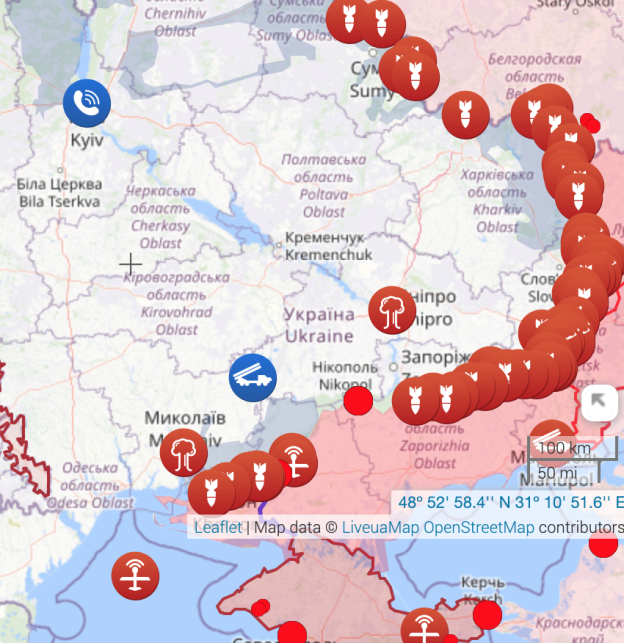
Similarly, the Institute for the Study of War’s latest Ukraine update tallies Russian advances and positional fighting; it’s hard to find any positive Ukraine sightings.
And the mainstream media is not doing much in the way of porcine maquillage. For instance, from Friday’s New York Times:
Ukraine’s military challenges go well beyond any single battle. American assistance, urgently needed, remains in doubt. Ukrainian troops are exhausted, and they lack weapons and ammunition. Air defense systems, crucial to protecting civilians from Russian missiles, are being steadily exhausted by repeated bombardments.
American officials assess that, without replenishment, Ukraine has enough air defenses to last until only next month.
If you checked out the Institute for the Study of War update, they give lead billing to the desperate state of Ukraine air defenses. More from the gray lady:
Western officials and military experts have warned that without U.S. assistance, a cascading collapse along the front is a real possibility later this year.
It would still be at least a couple of months before the lack of renewed aid has a widespread impact, they say. But without it, they add, it’s hard to see how Ukraine will be able to maintain its current positions on the battlefield.
By next month, Ukraine could struggle to conduct local counterattacks, and by early summer, its military might have difficulty rebuffing Russian assaults, the officials and analysts say.
2 Victoria Nuland was rumored to have come to Kiev to (probably among other things) persuade Zelensky to keep Zaluzhny. Nuland is close to Neo-Nazi leaders, such as the former head of the Right Sector Dmytro Yarosh. This theory would explain her bizarre, isolated night press conference in what I assume was Maidan Square. It screams that Zelensky denied her the use of government offices.
Note also that former lieutenant colonel Lawrence Wilkerson says Syrzky has a good reputation among foreign military types. So he may be terrible only as a willing implement of Zelensky’s bad tendencies.
https://www.nakedcapitalism.com/2024/02 ... -next.html
